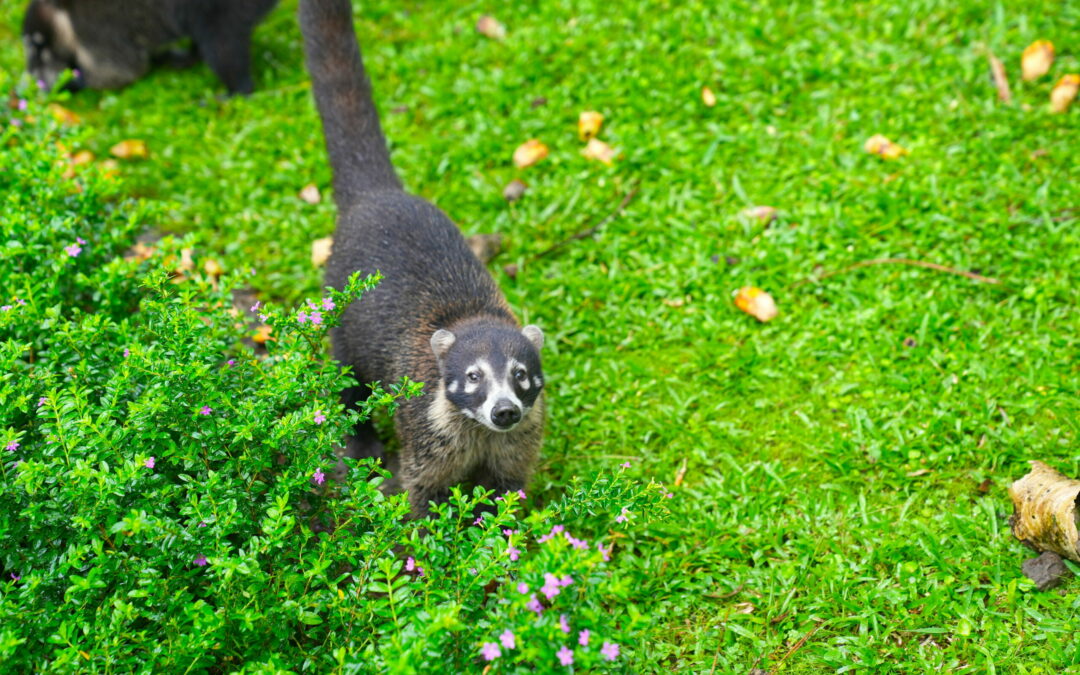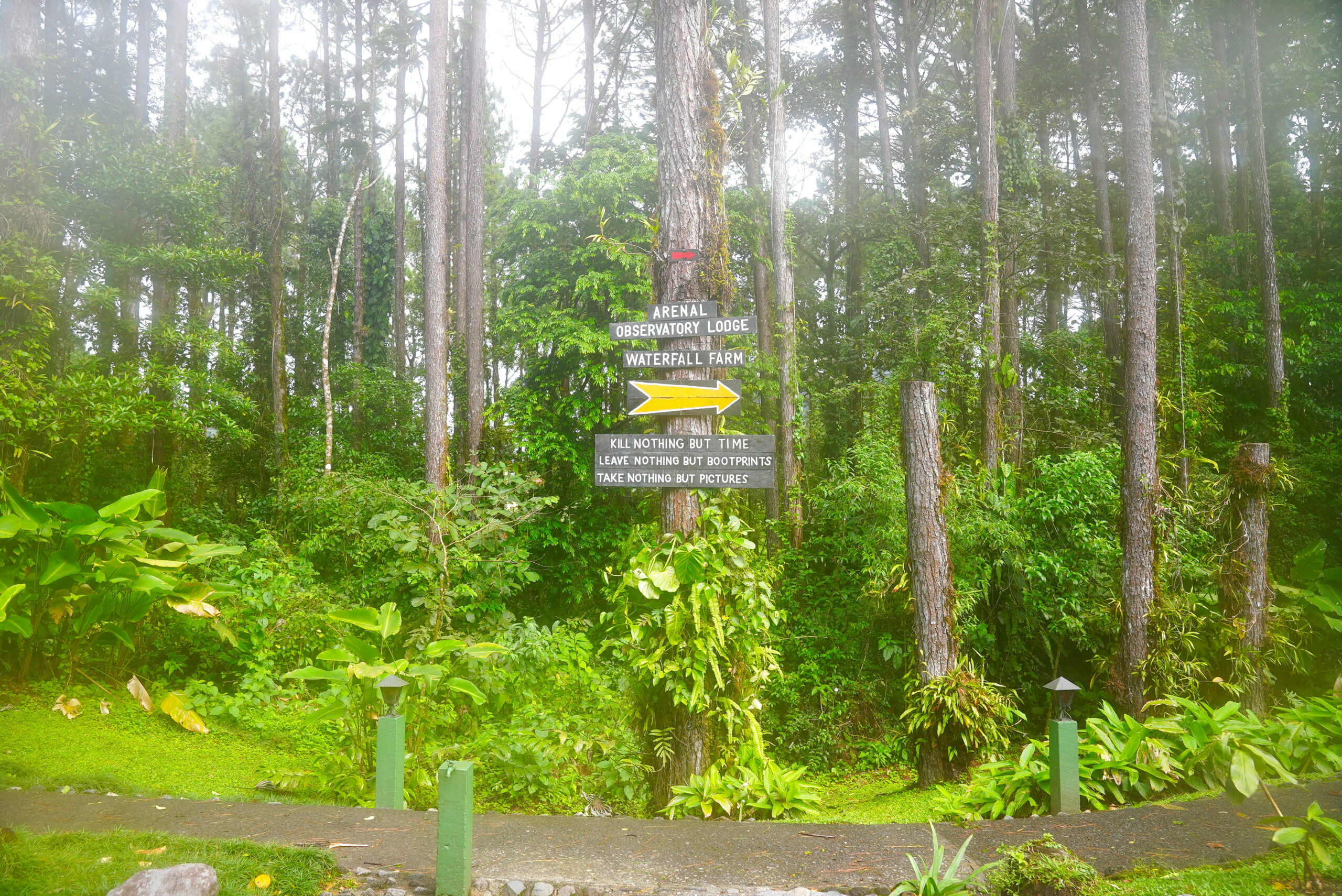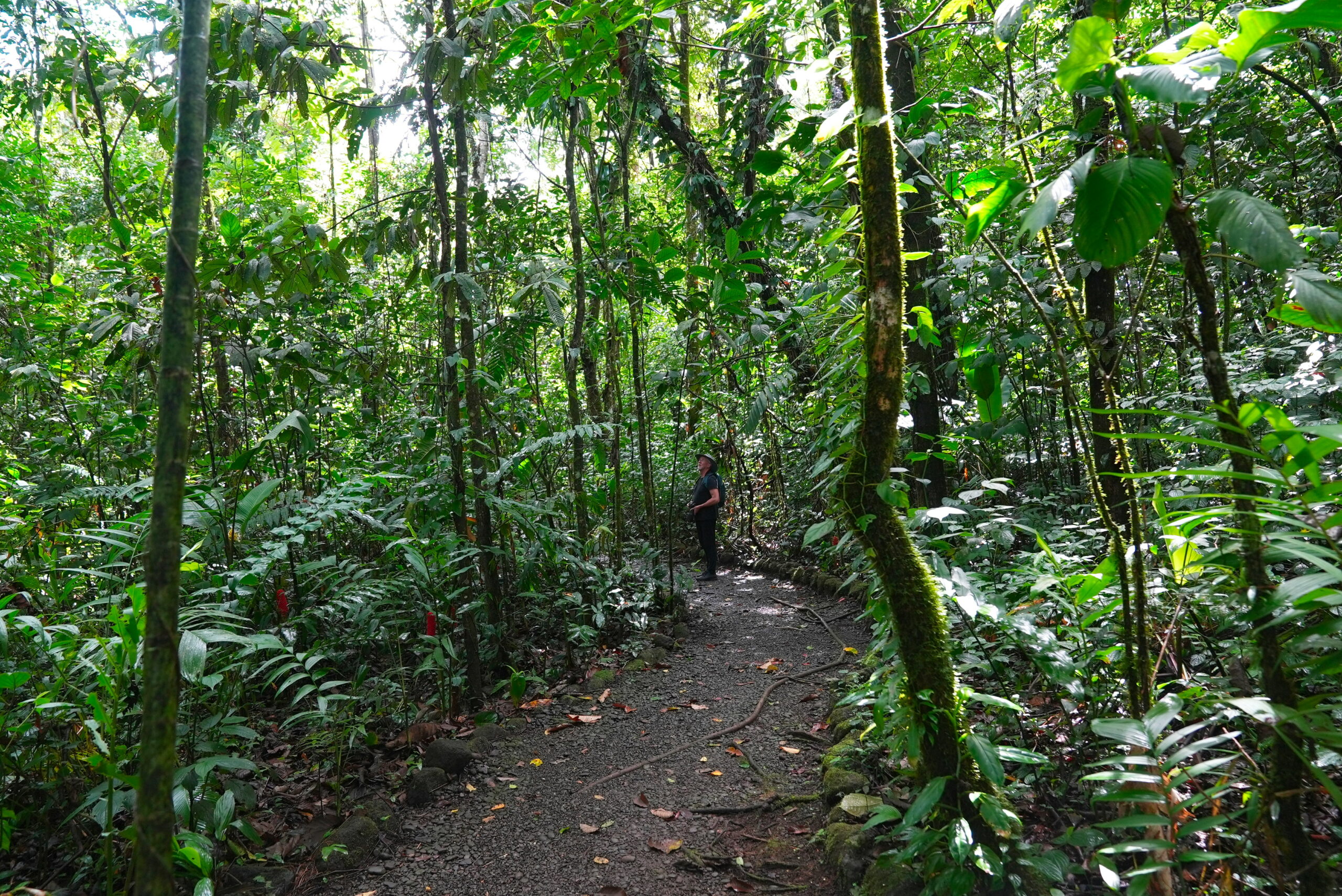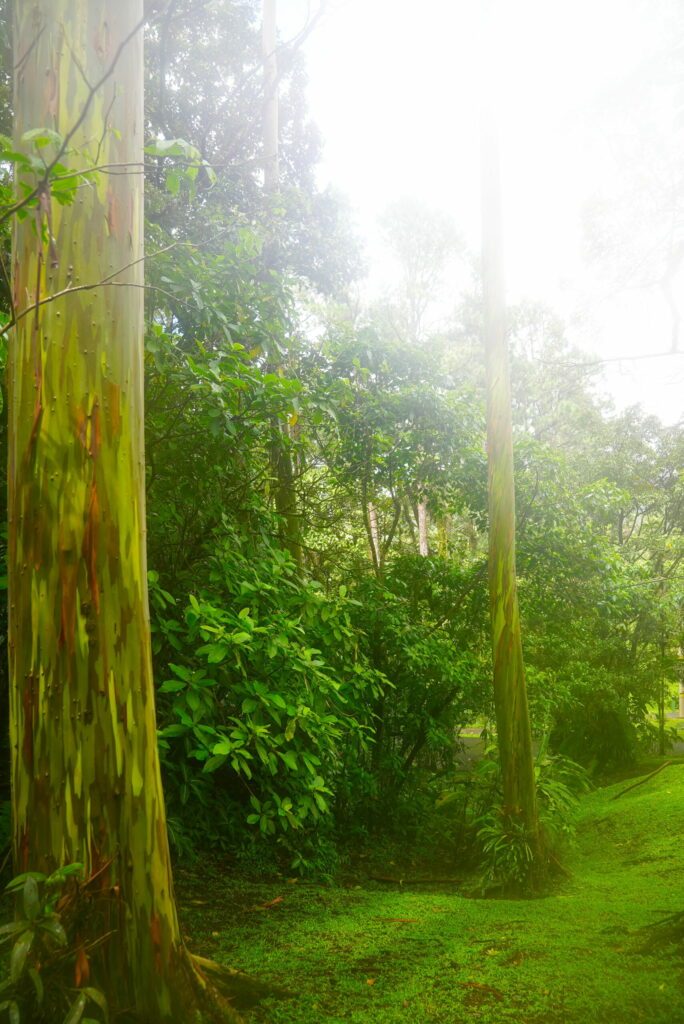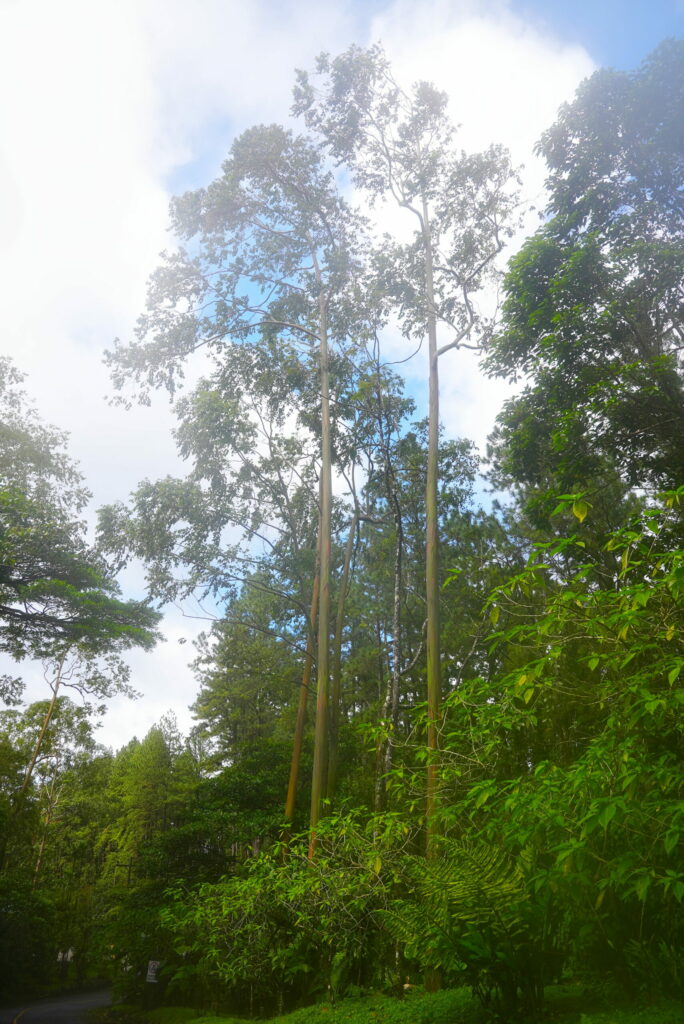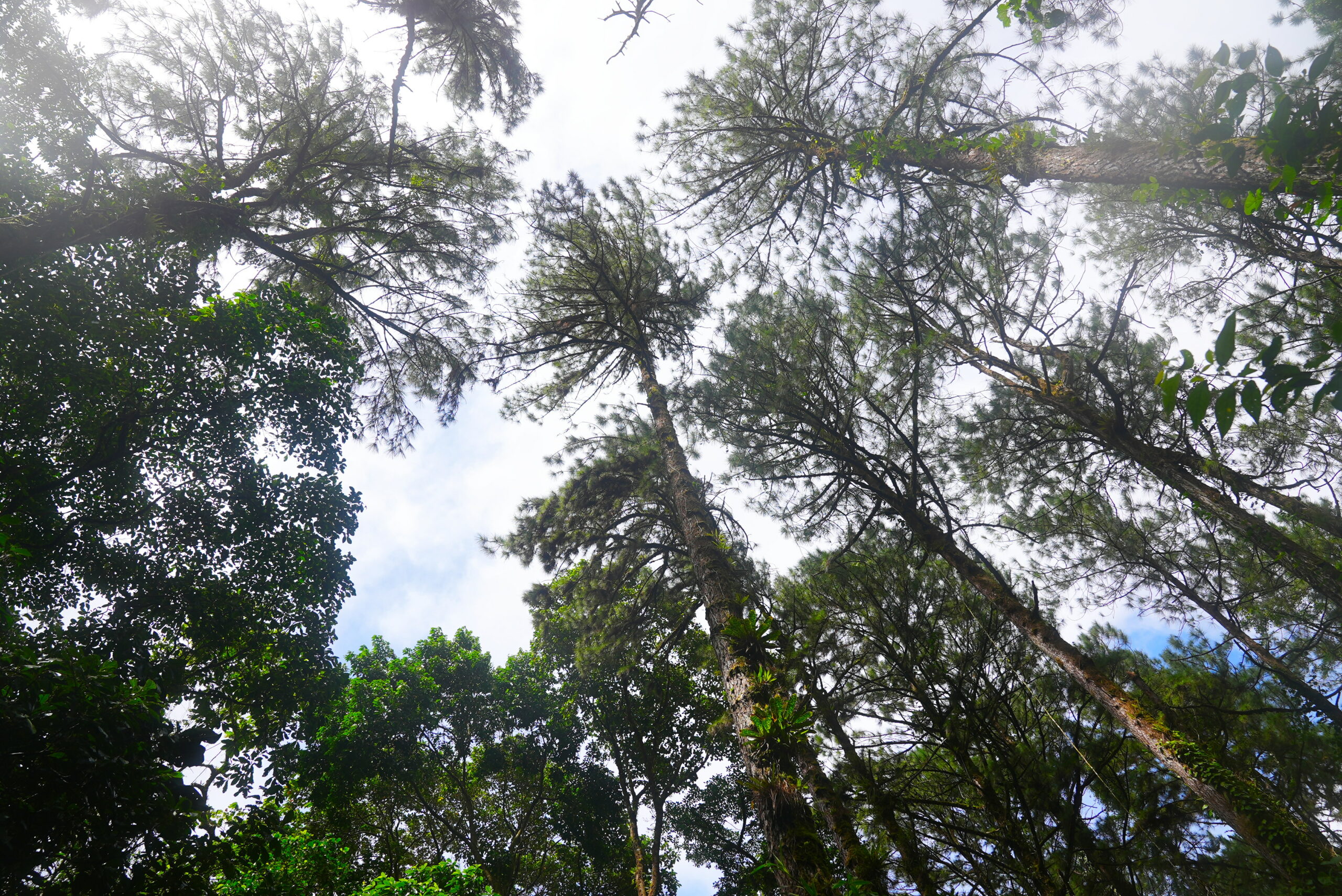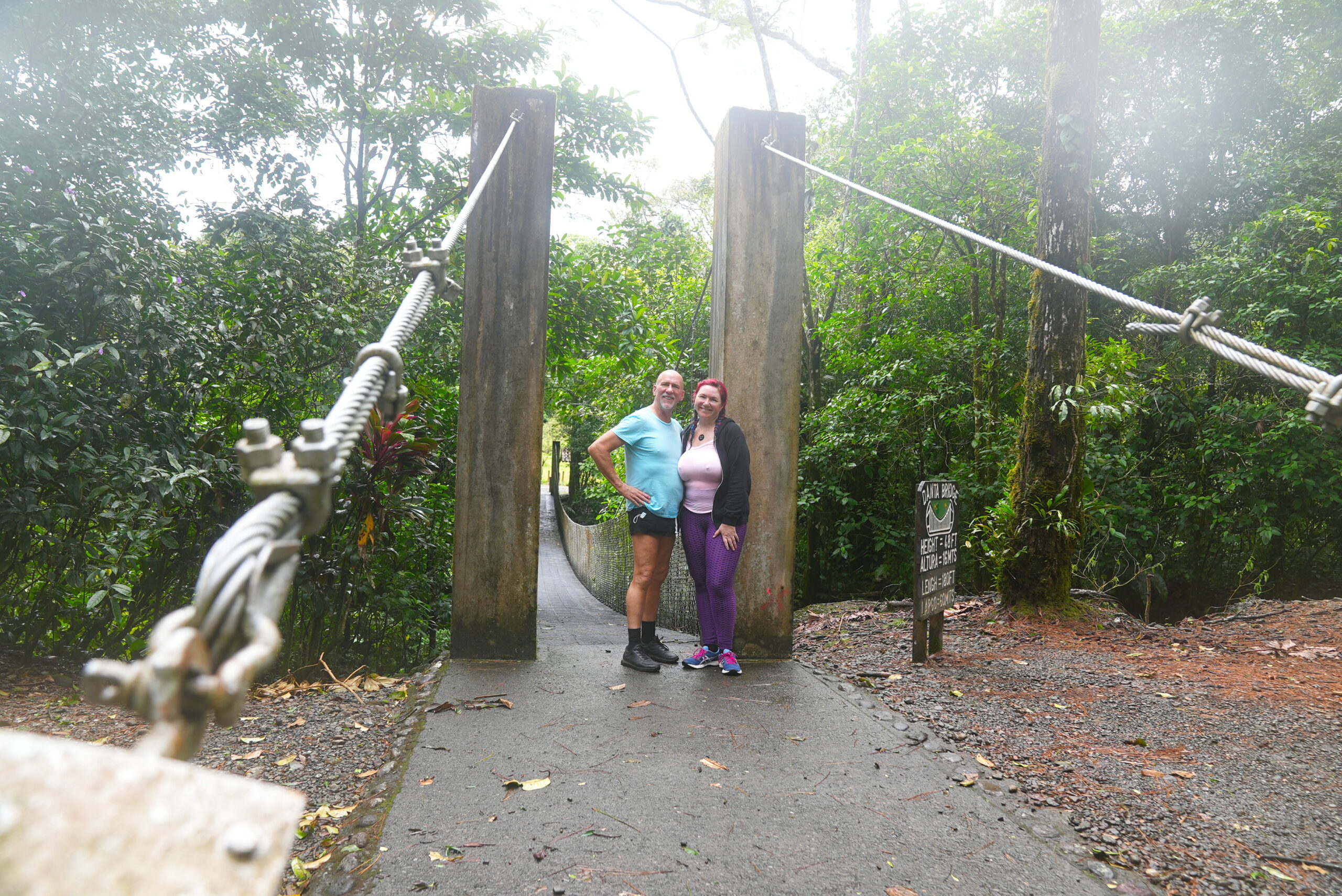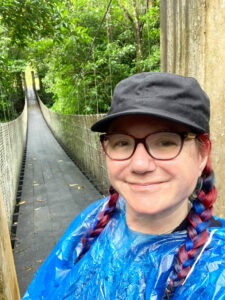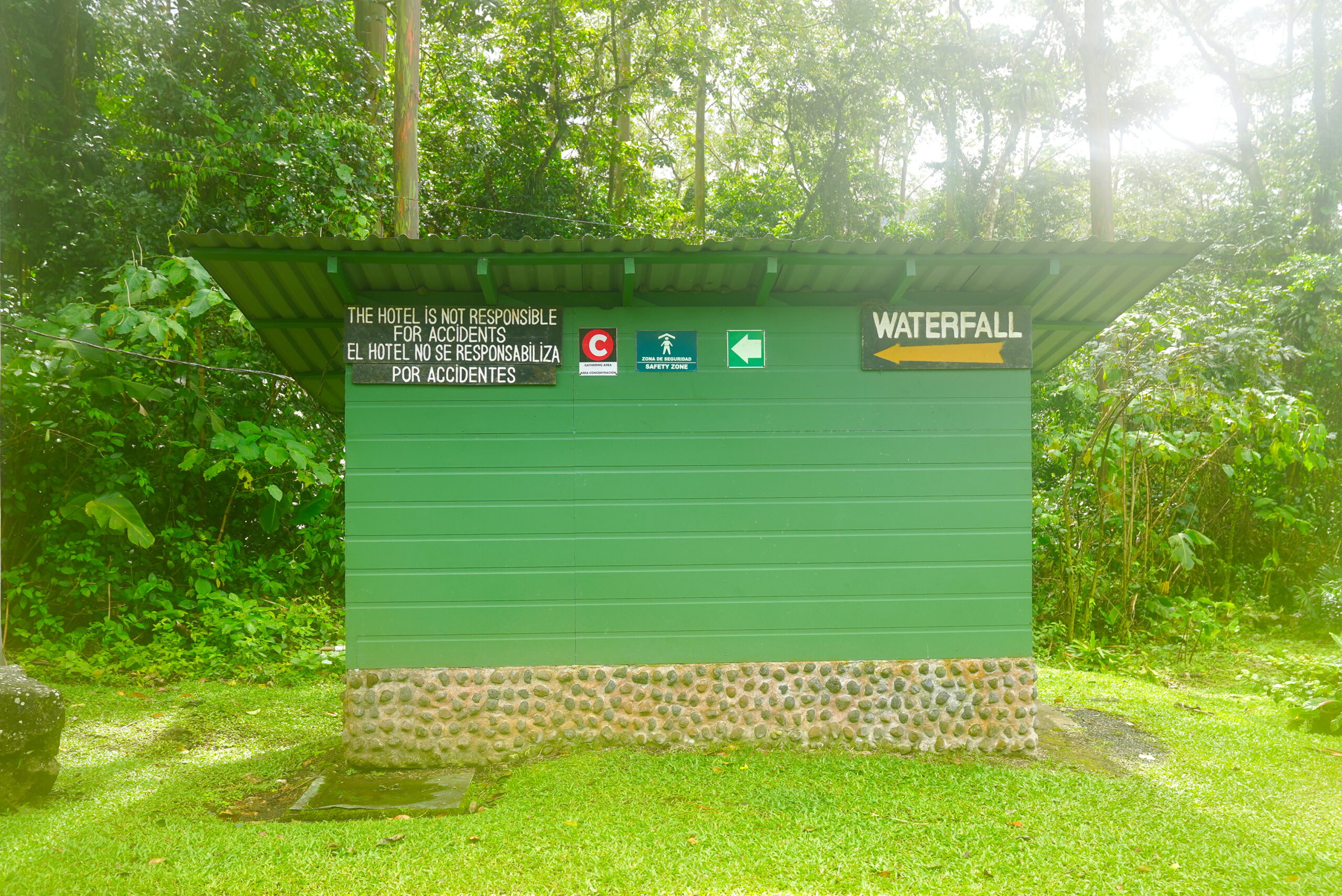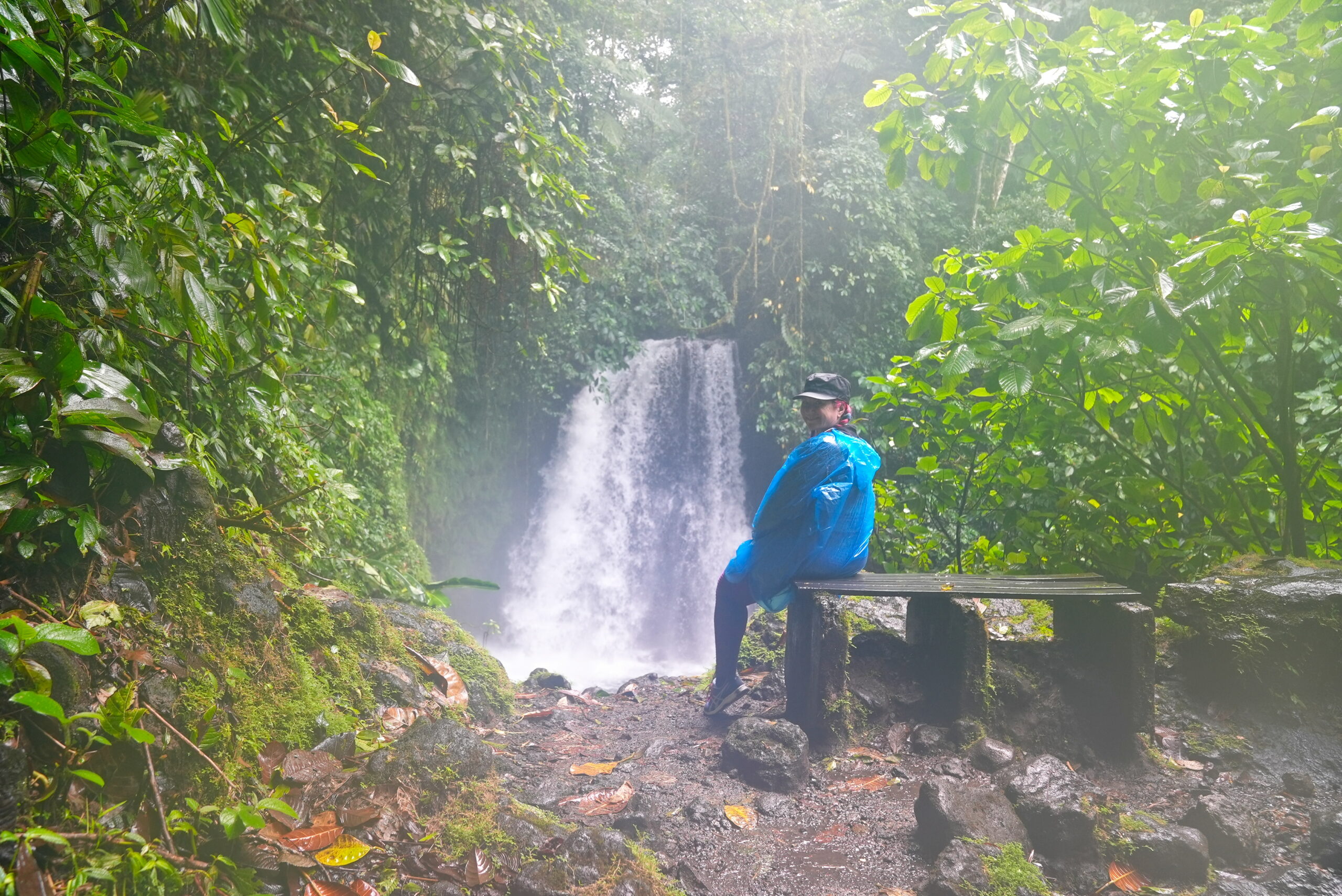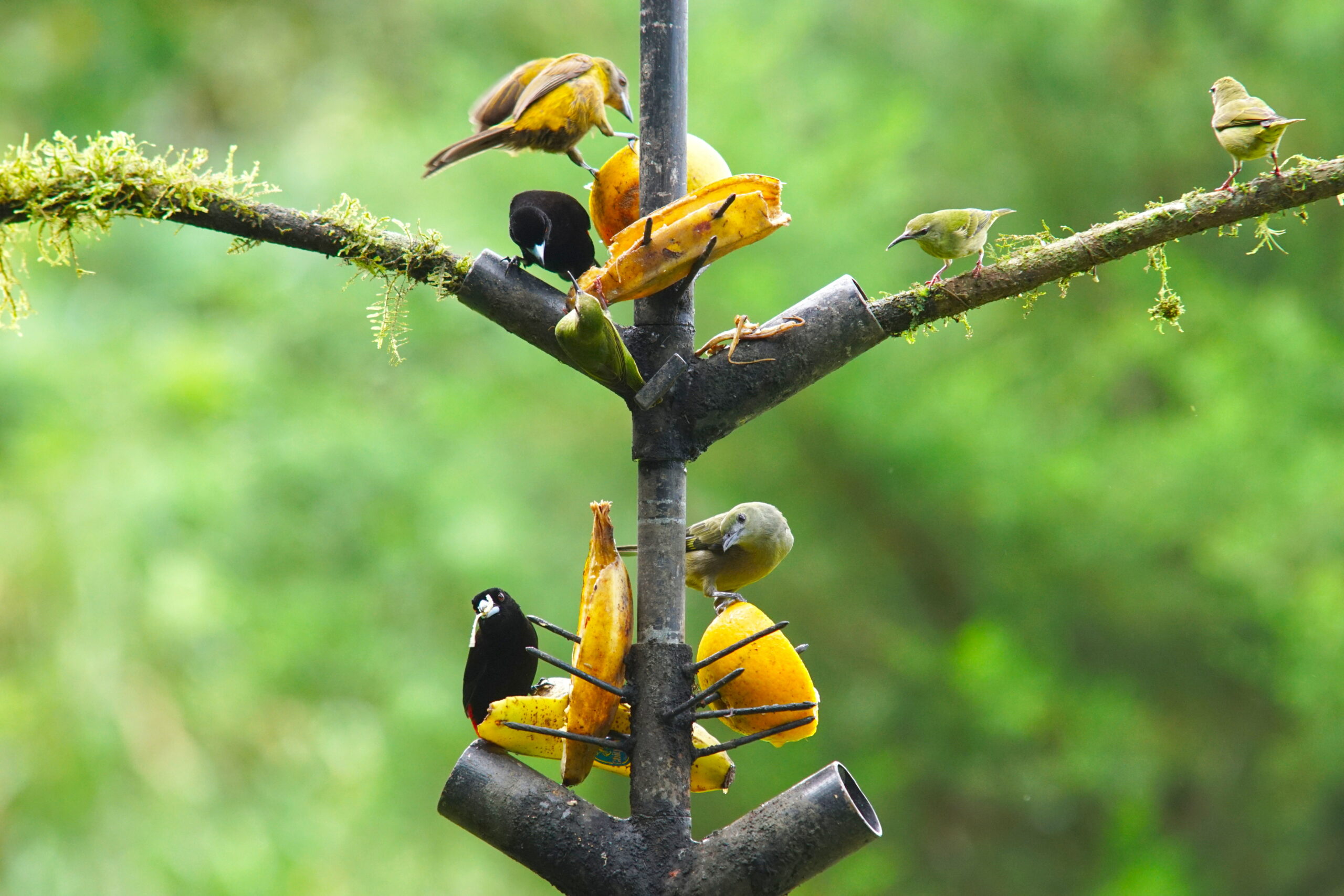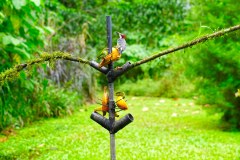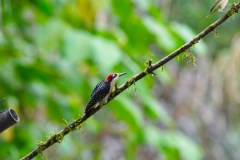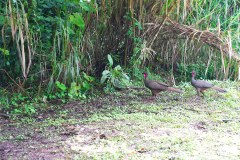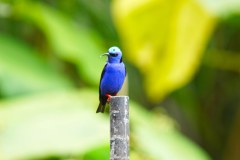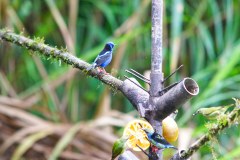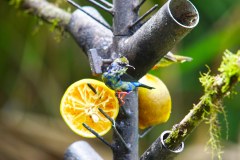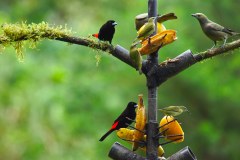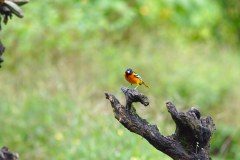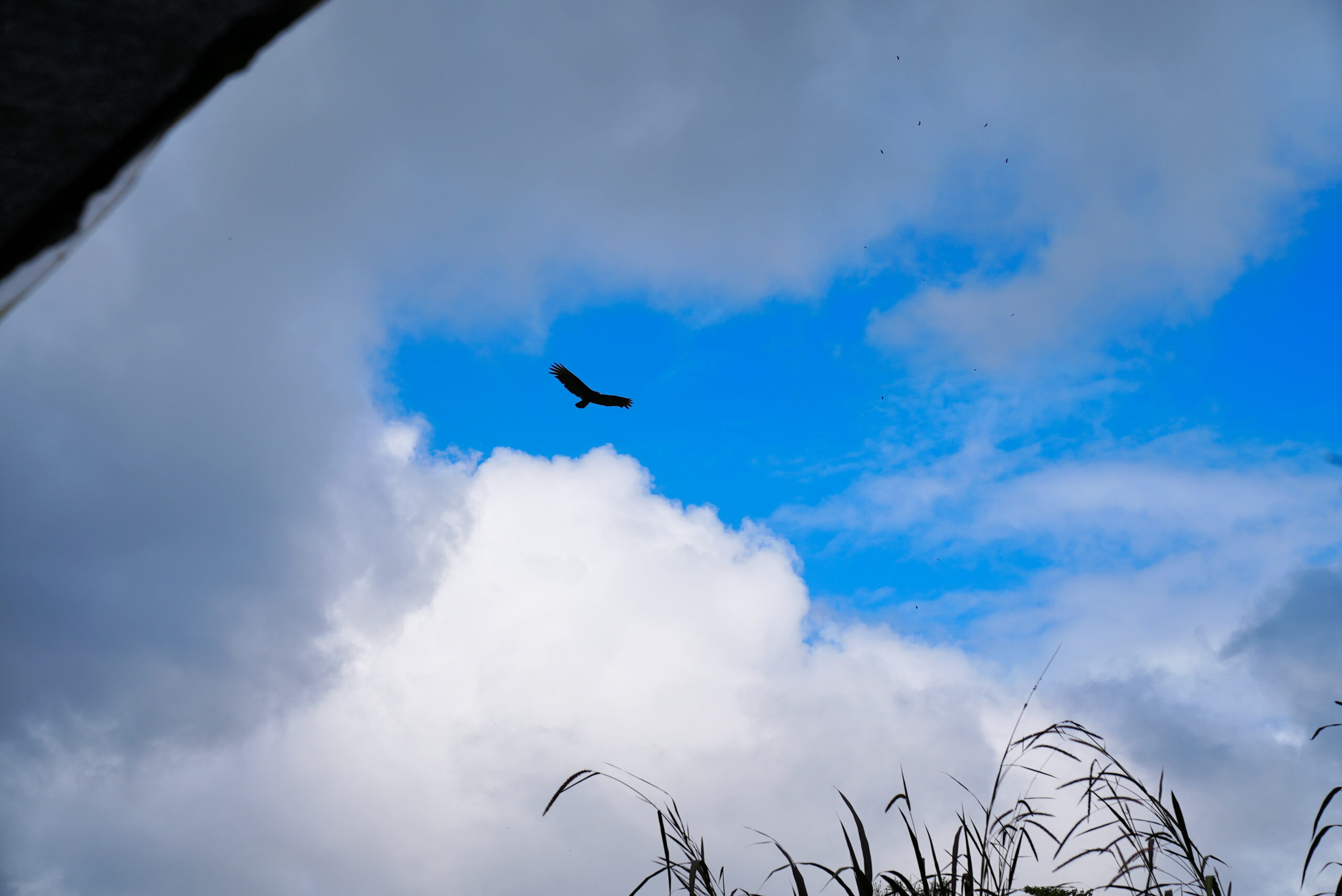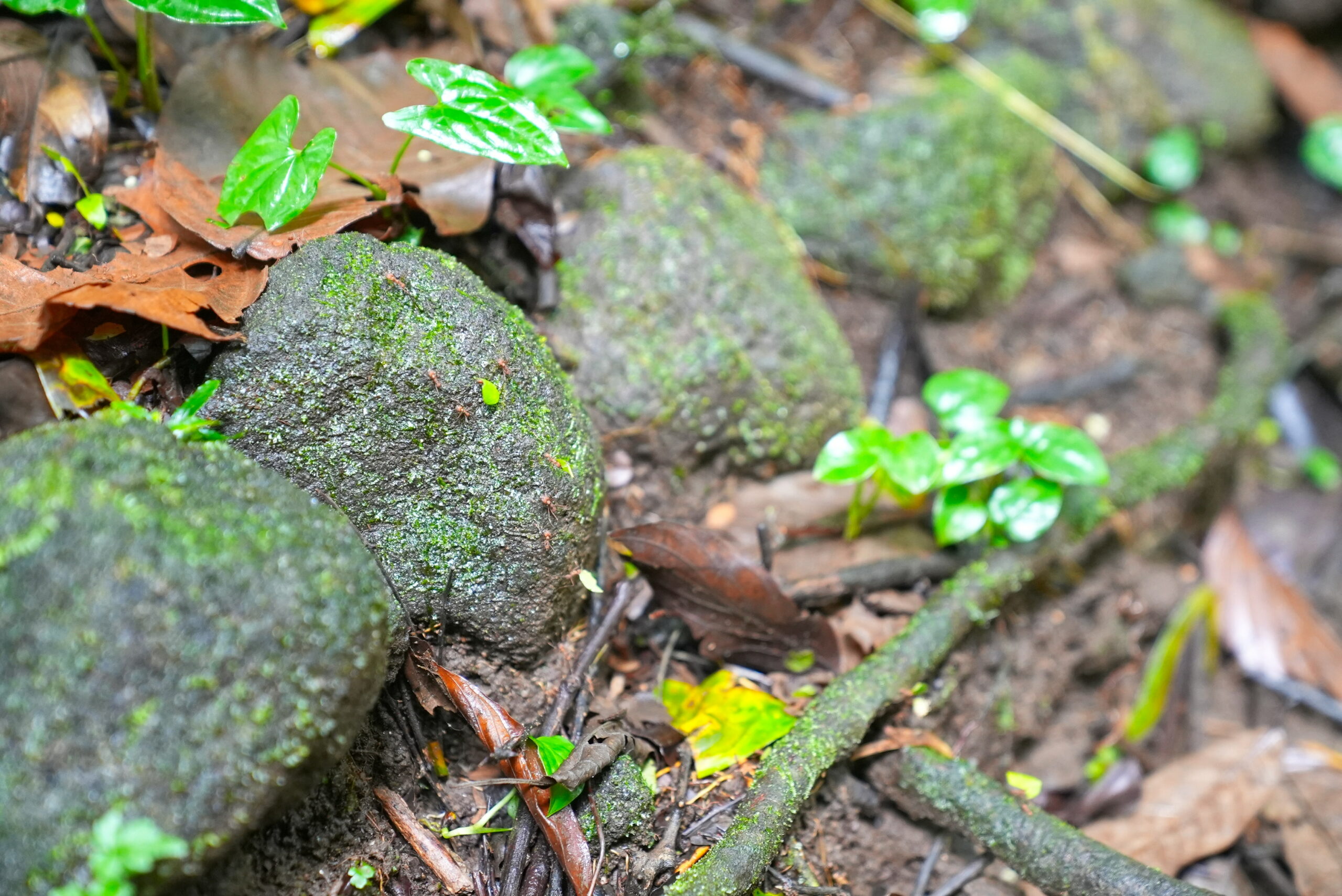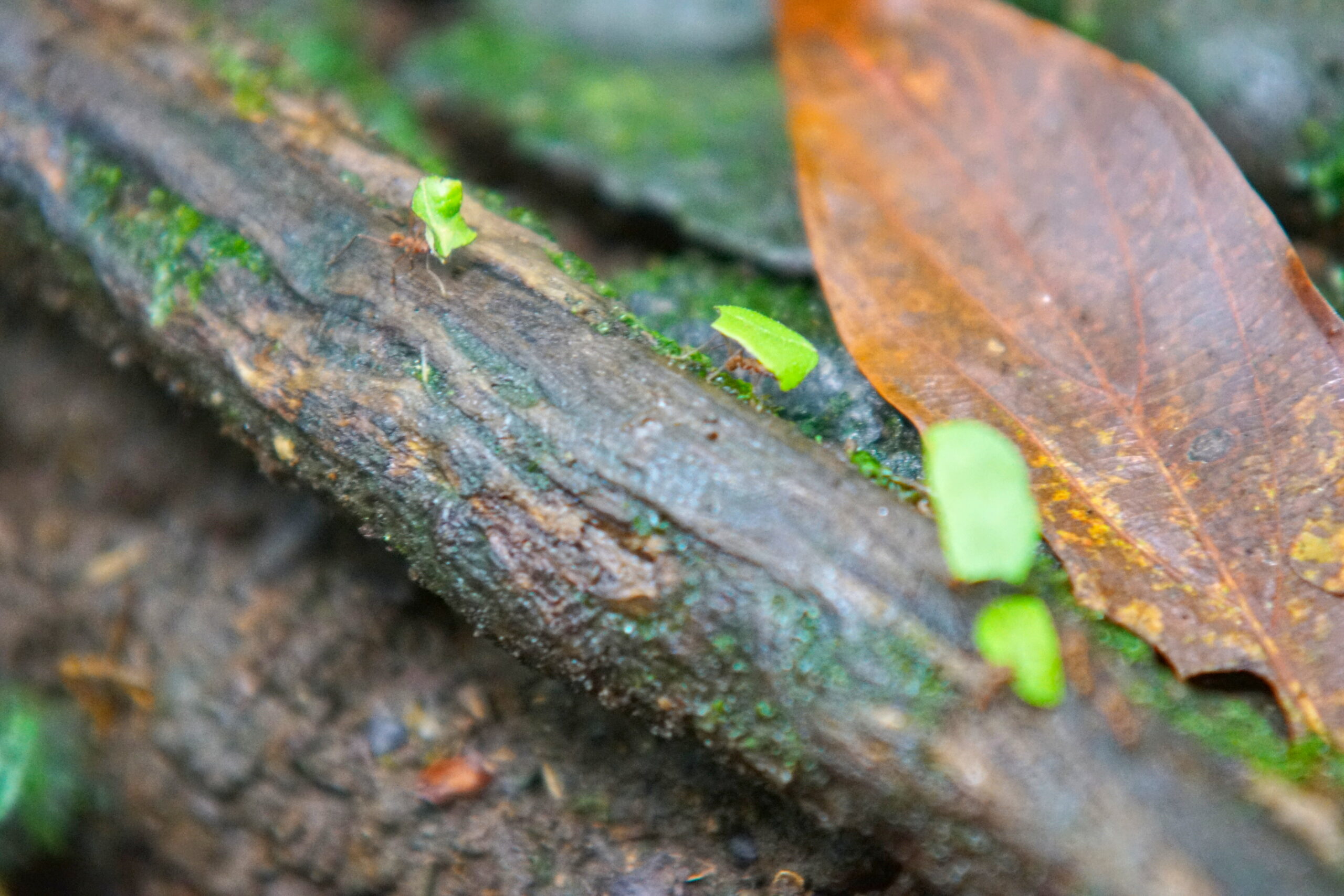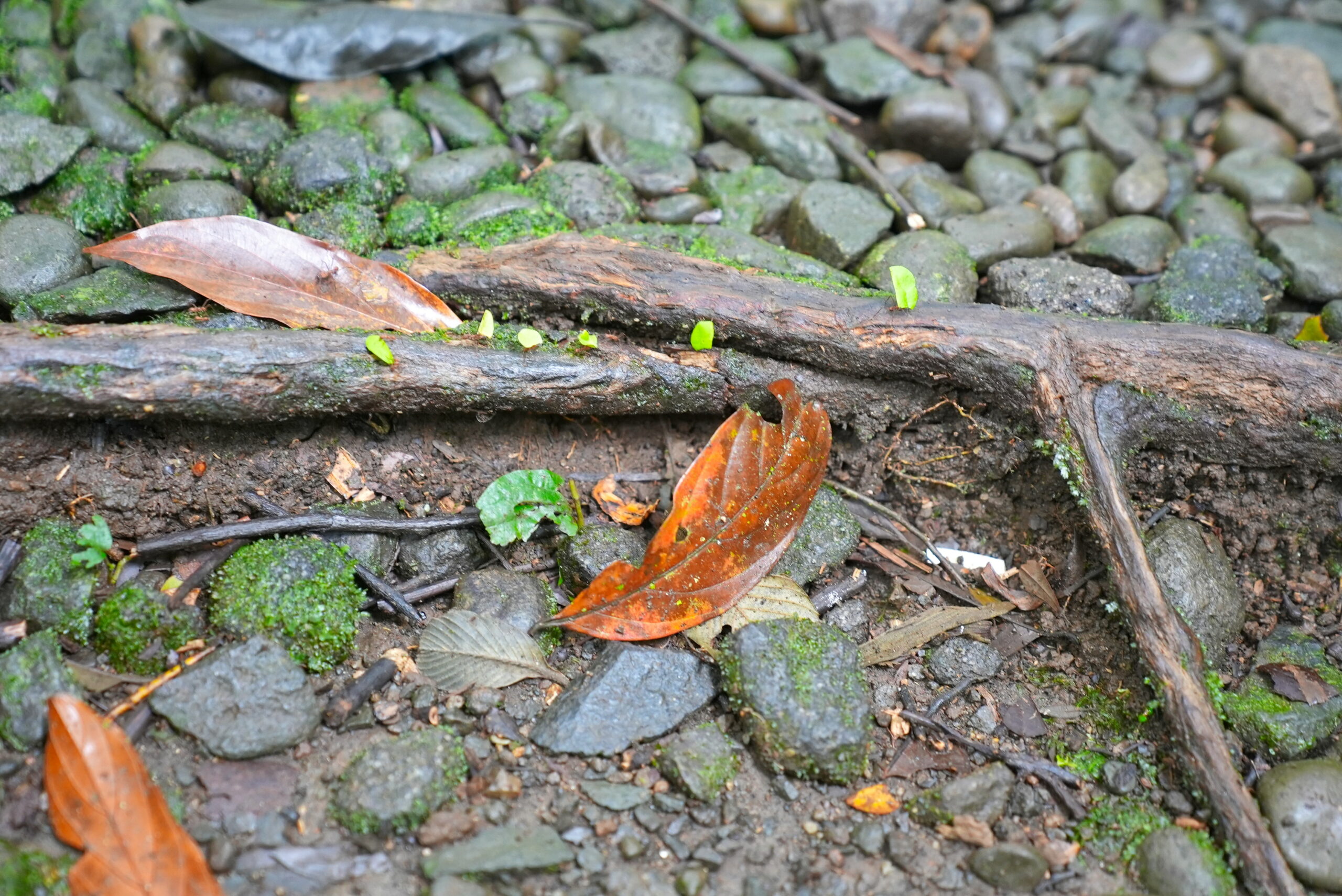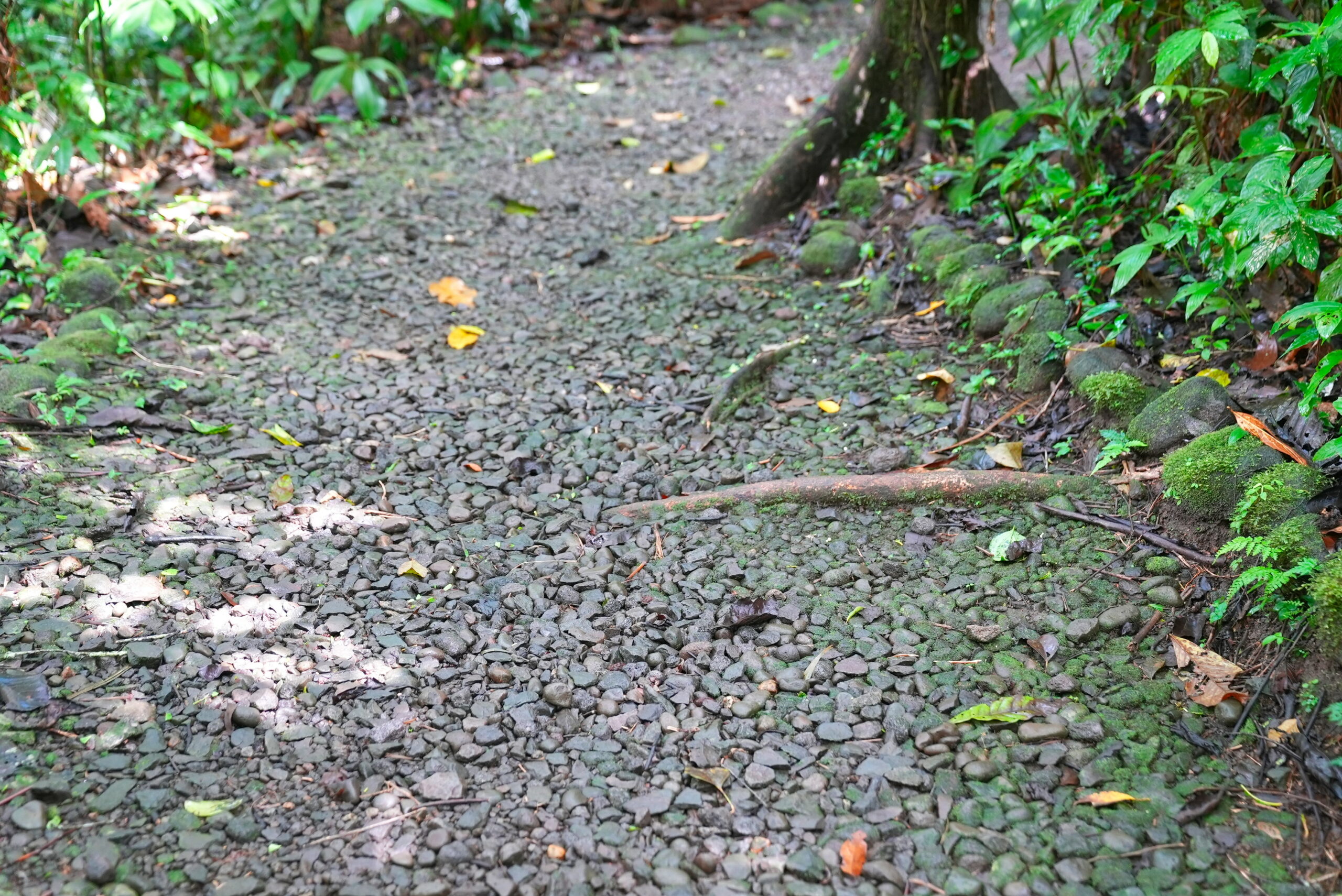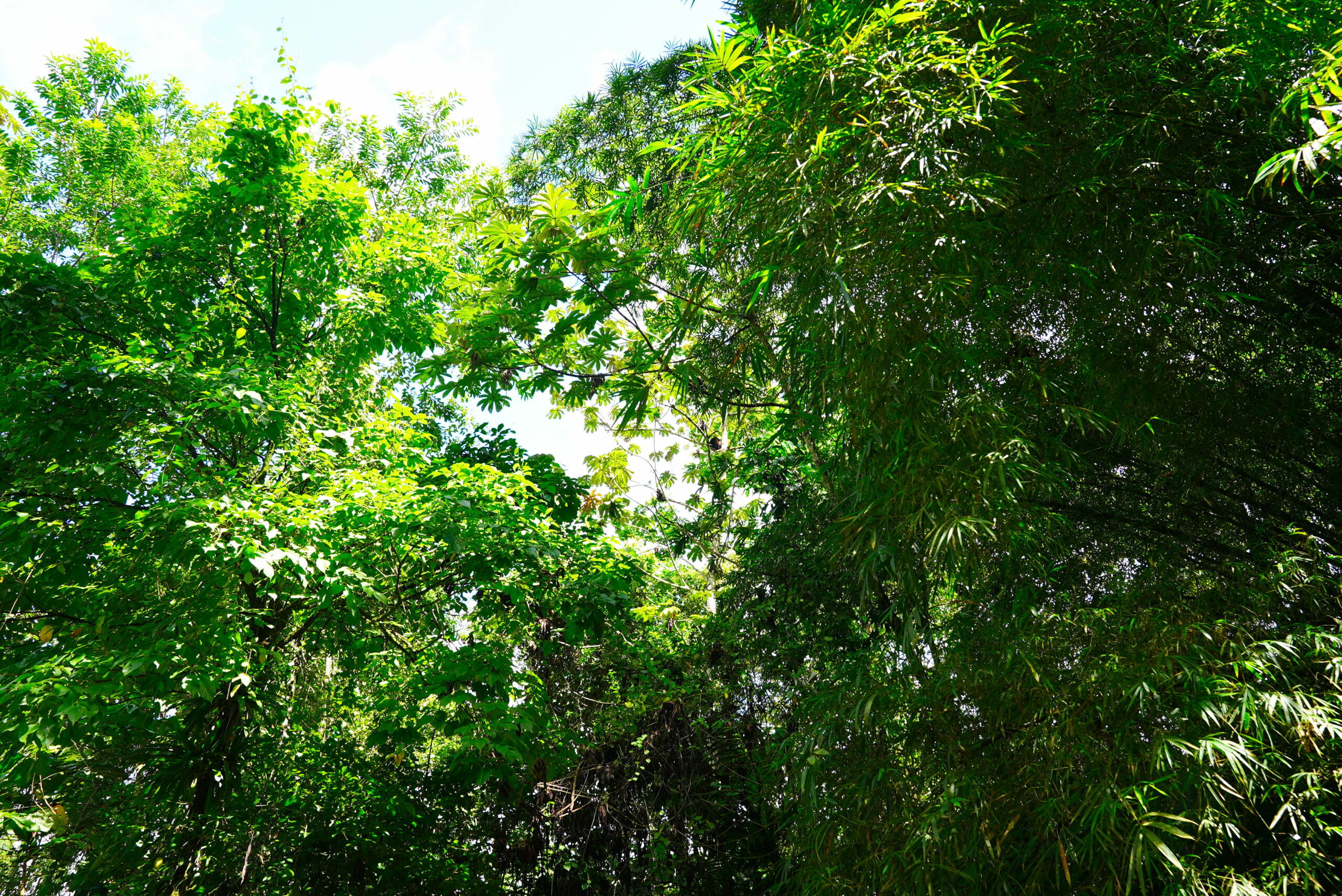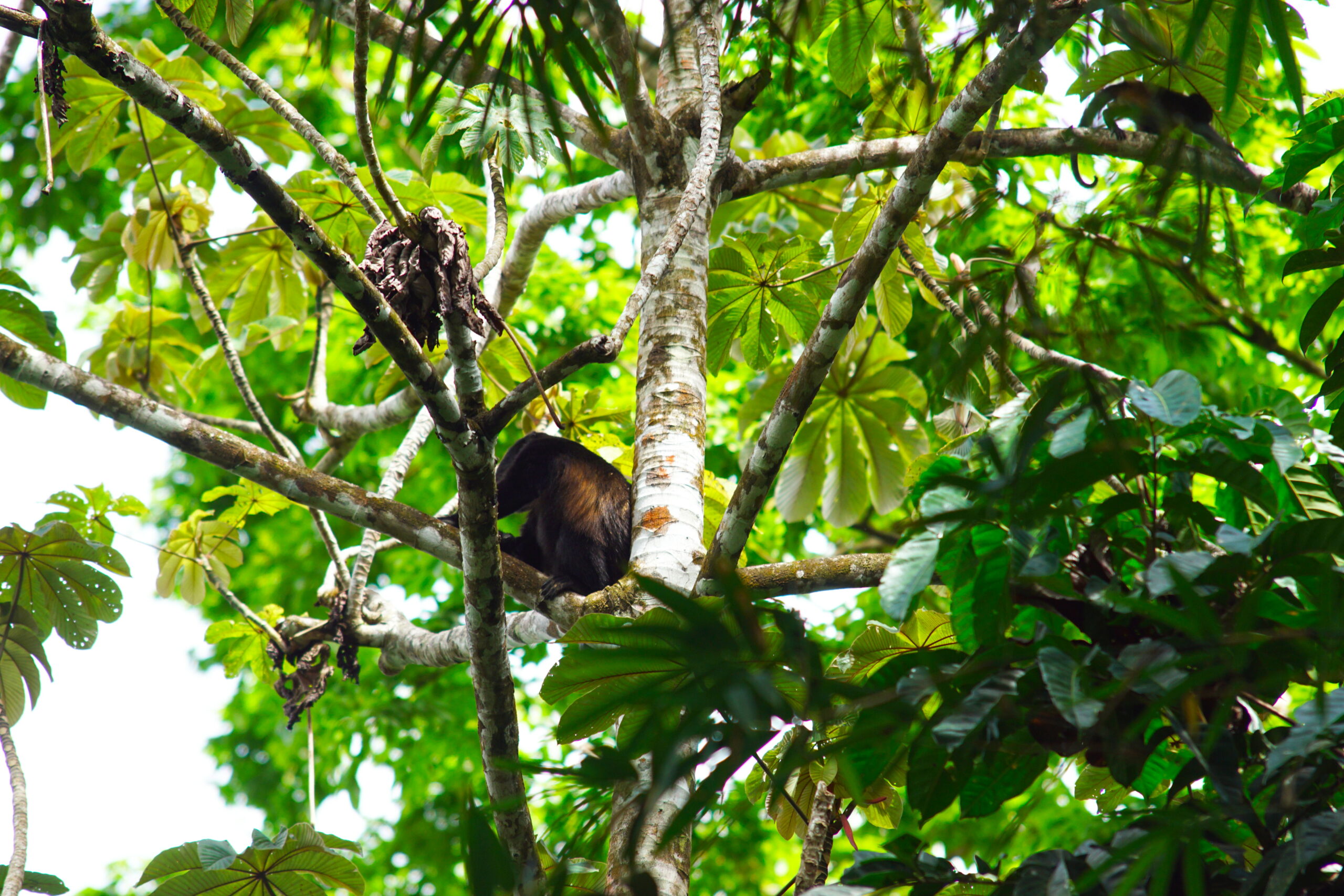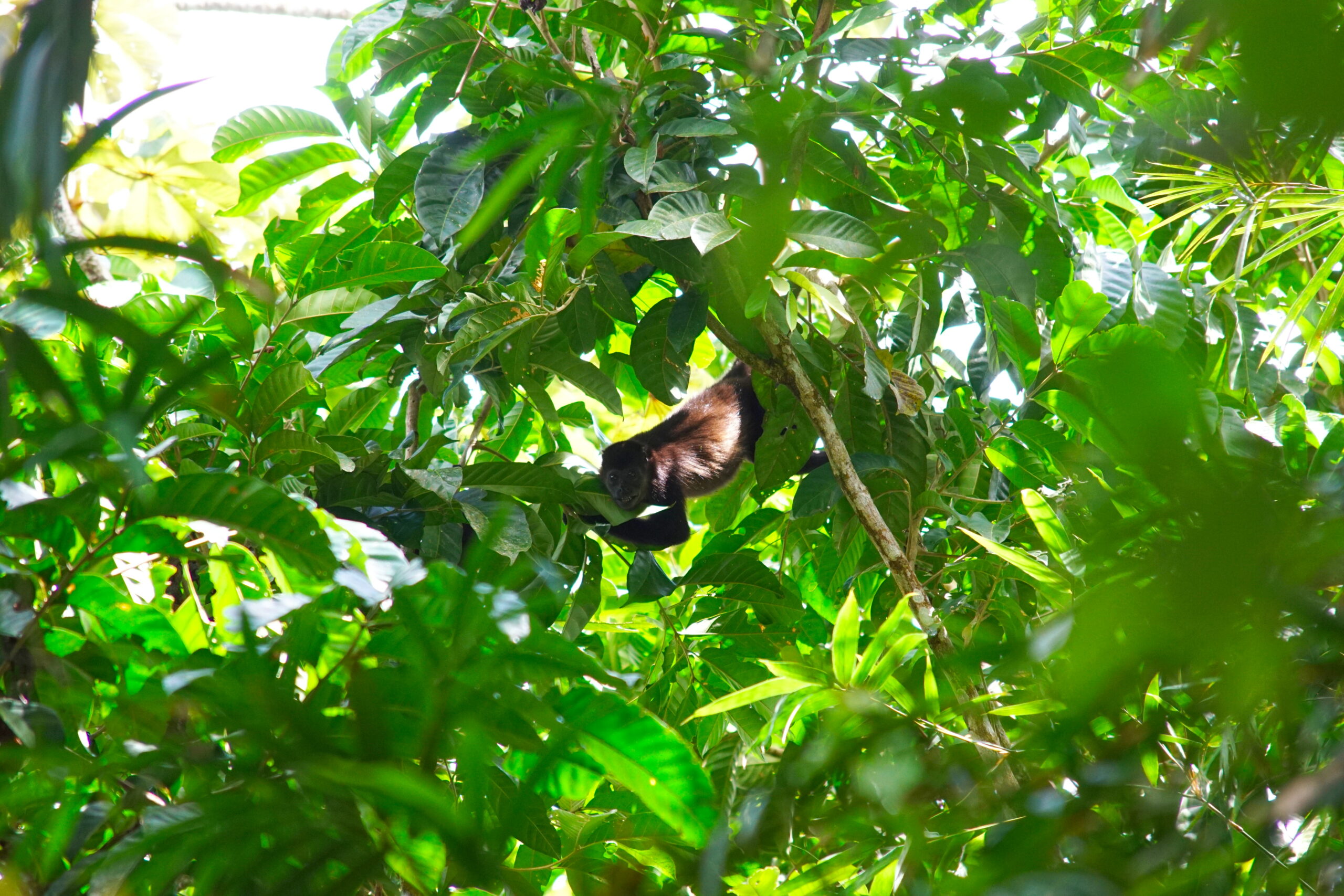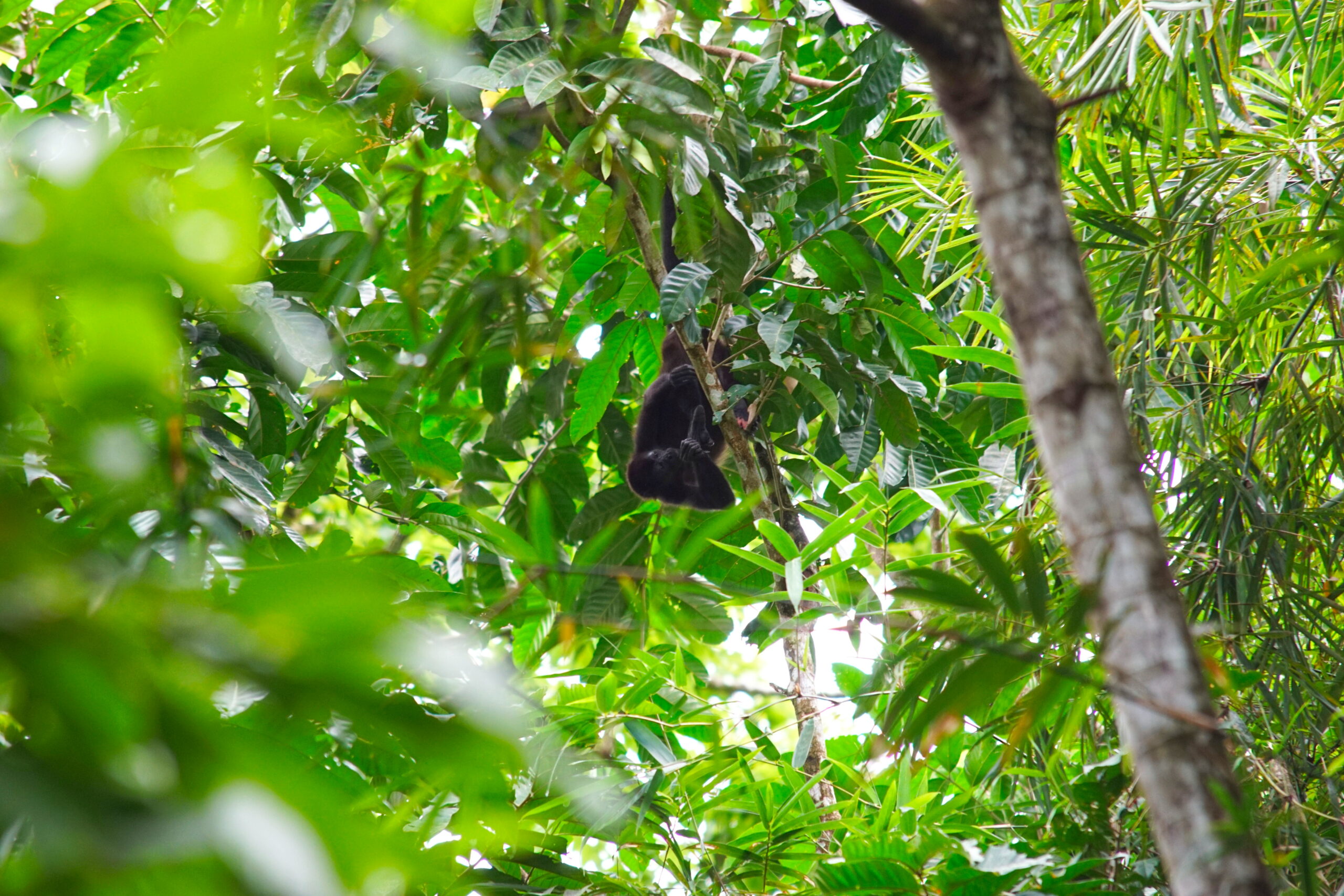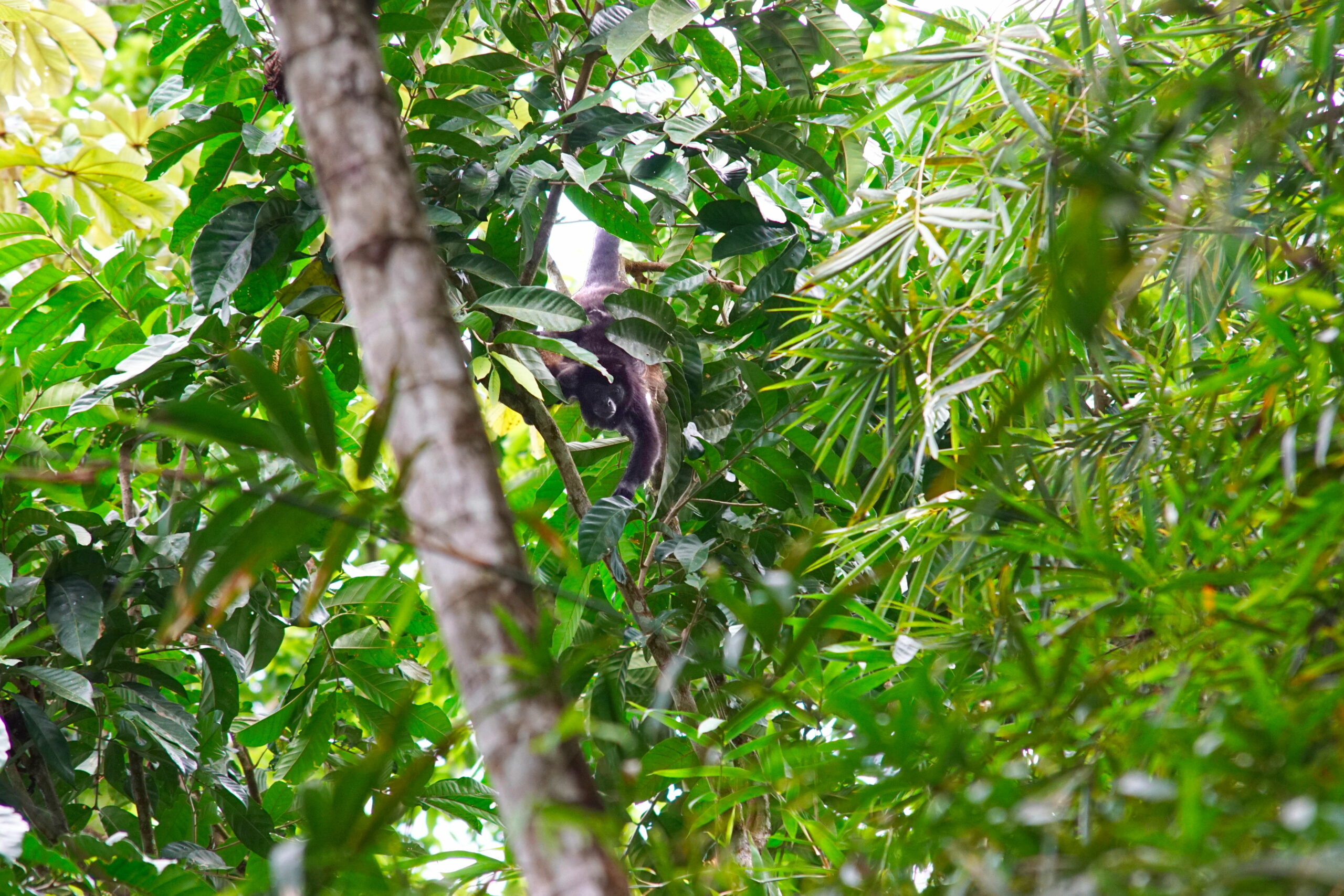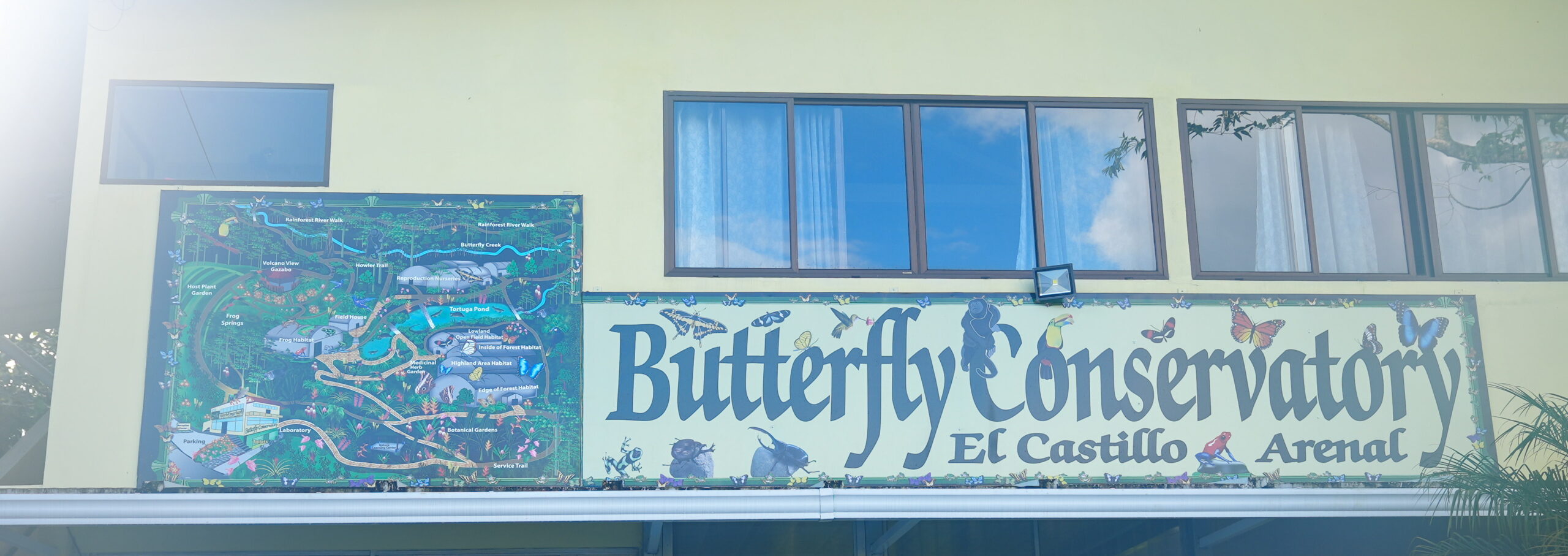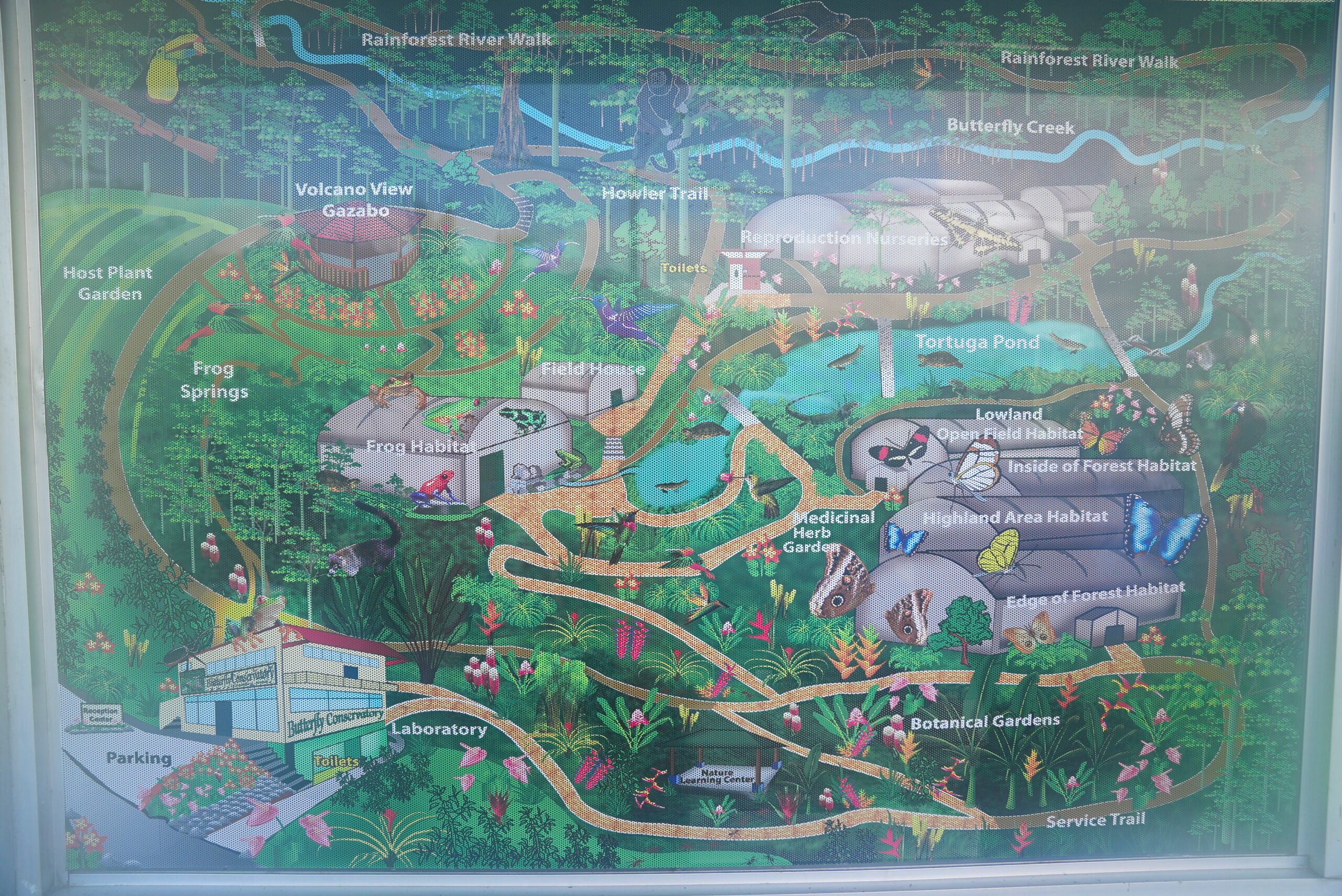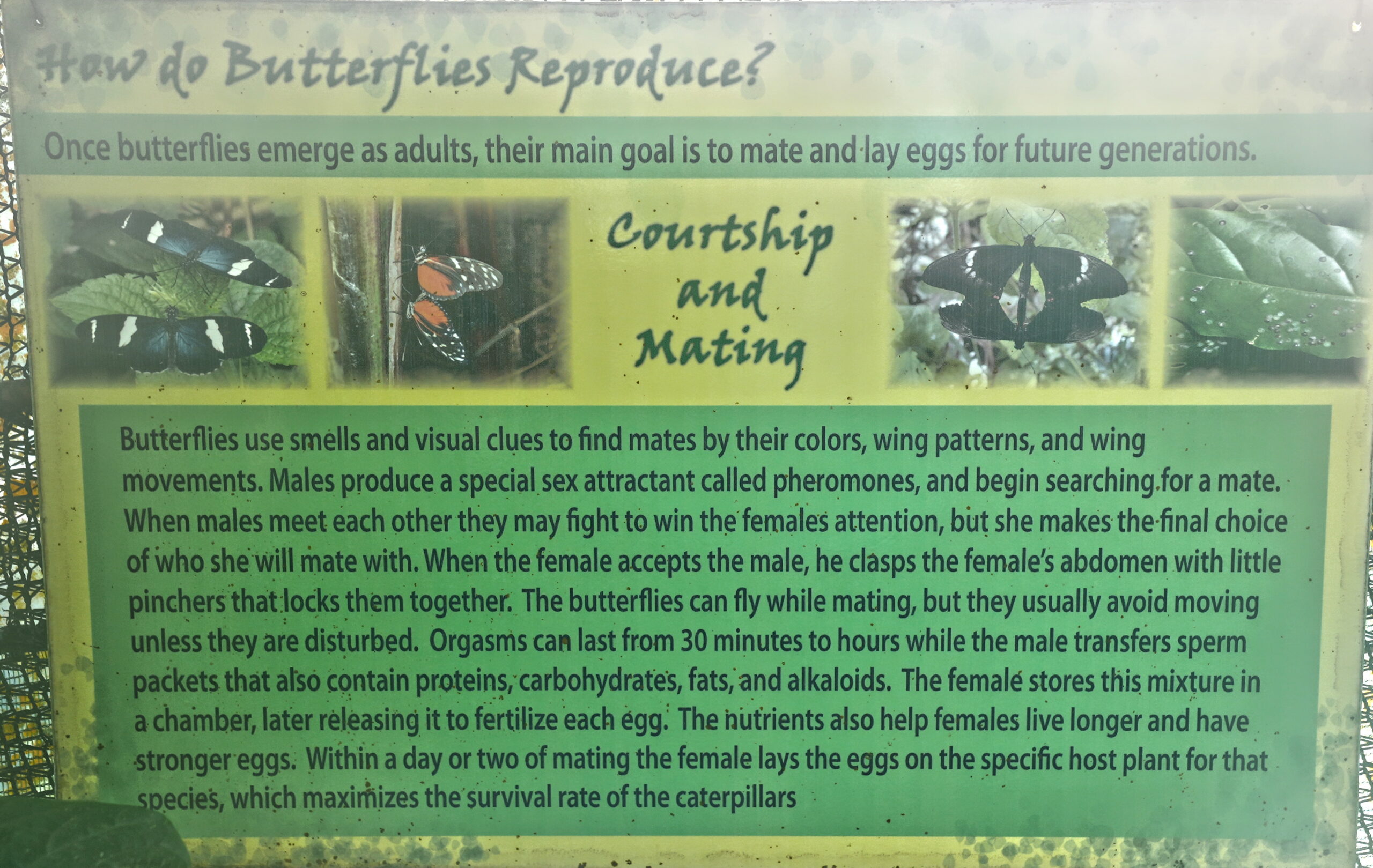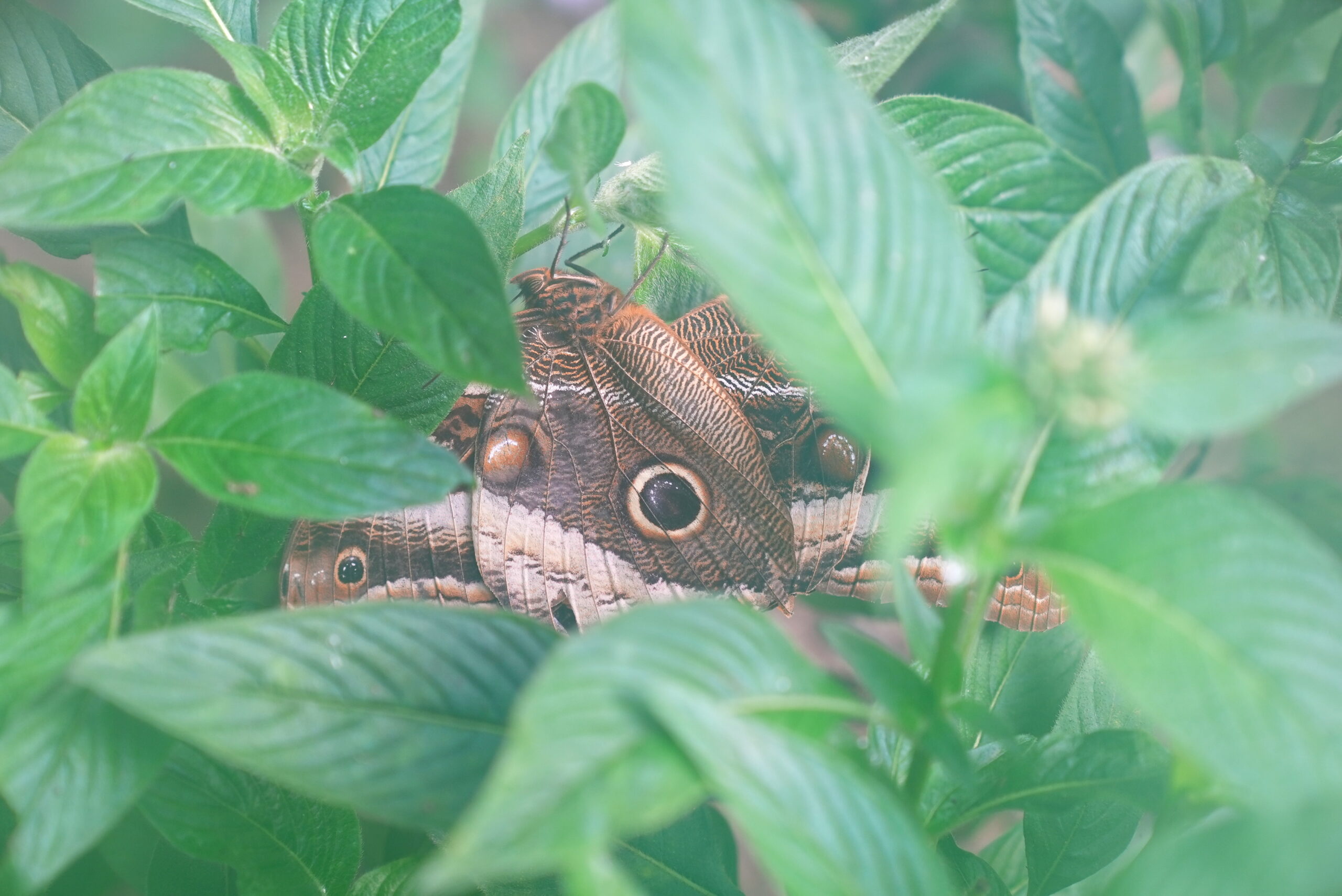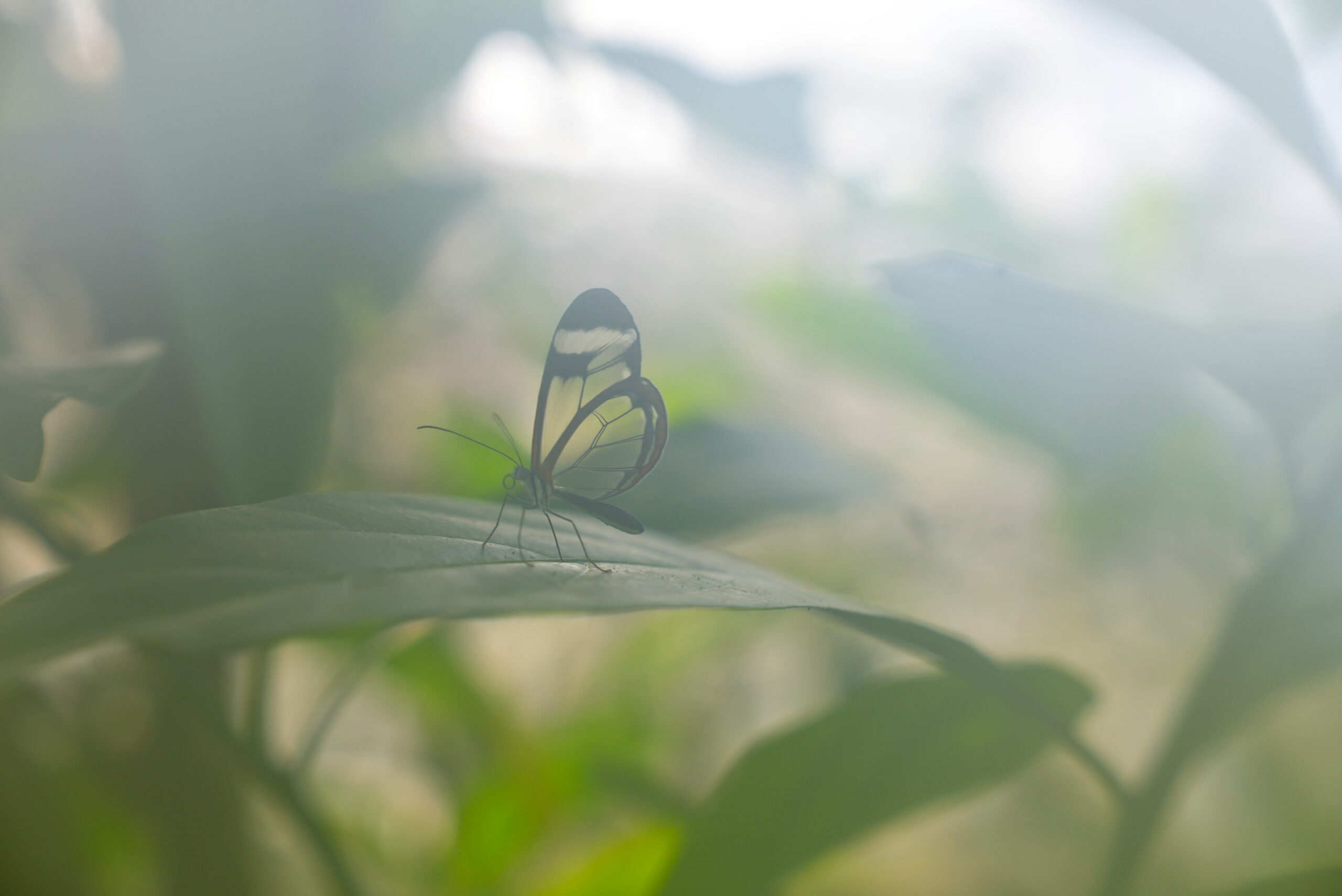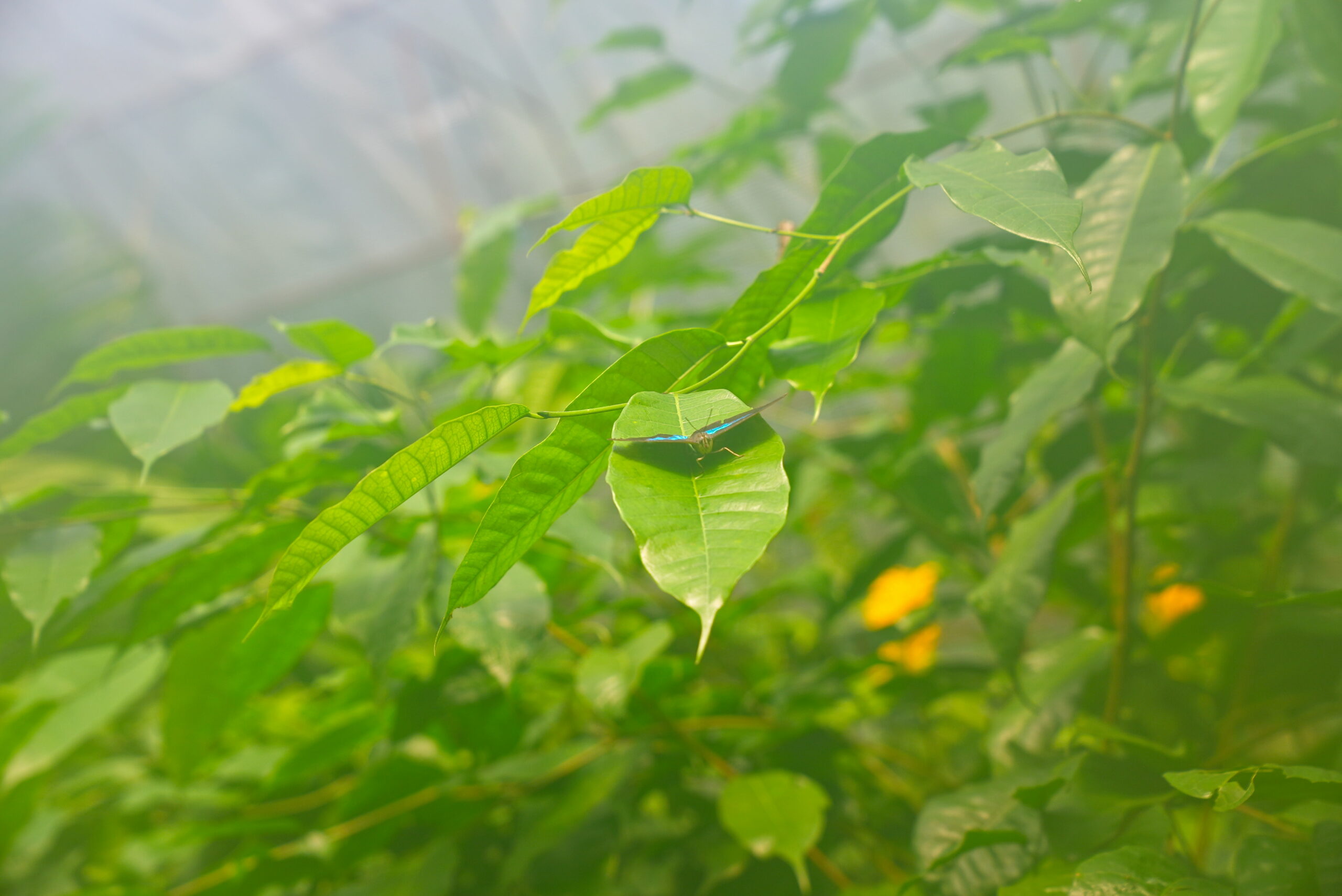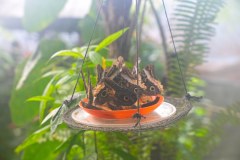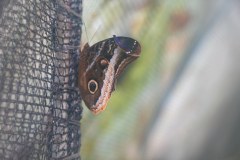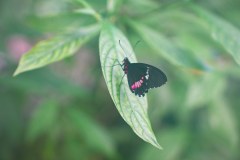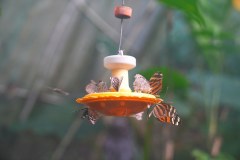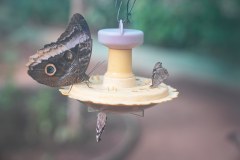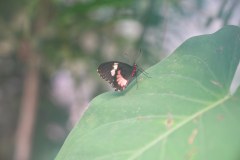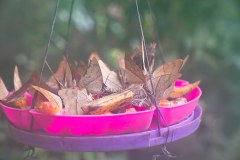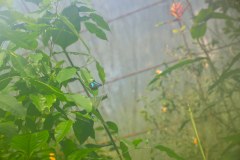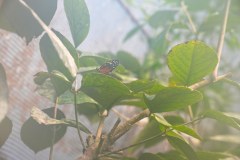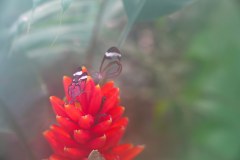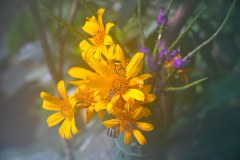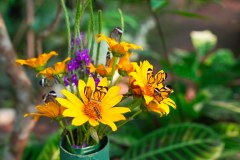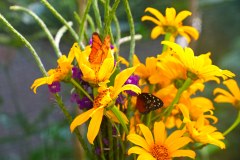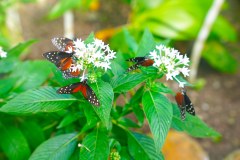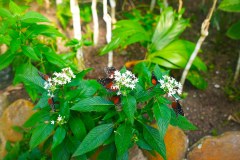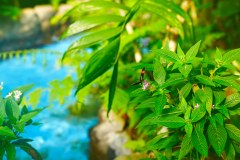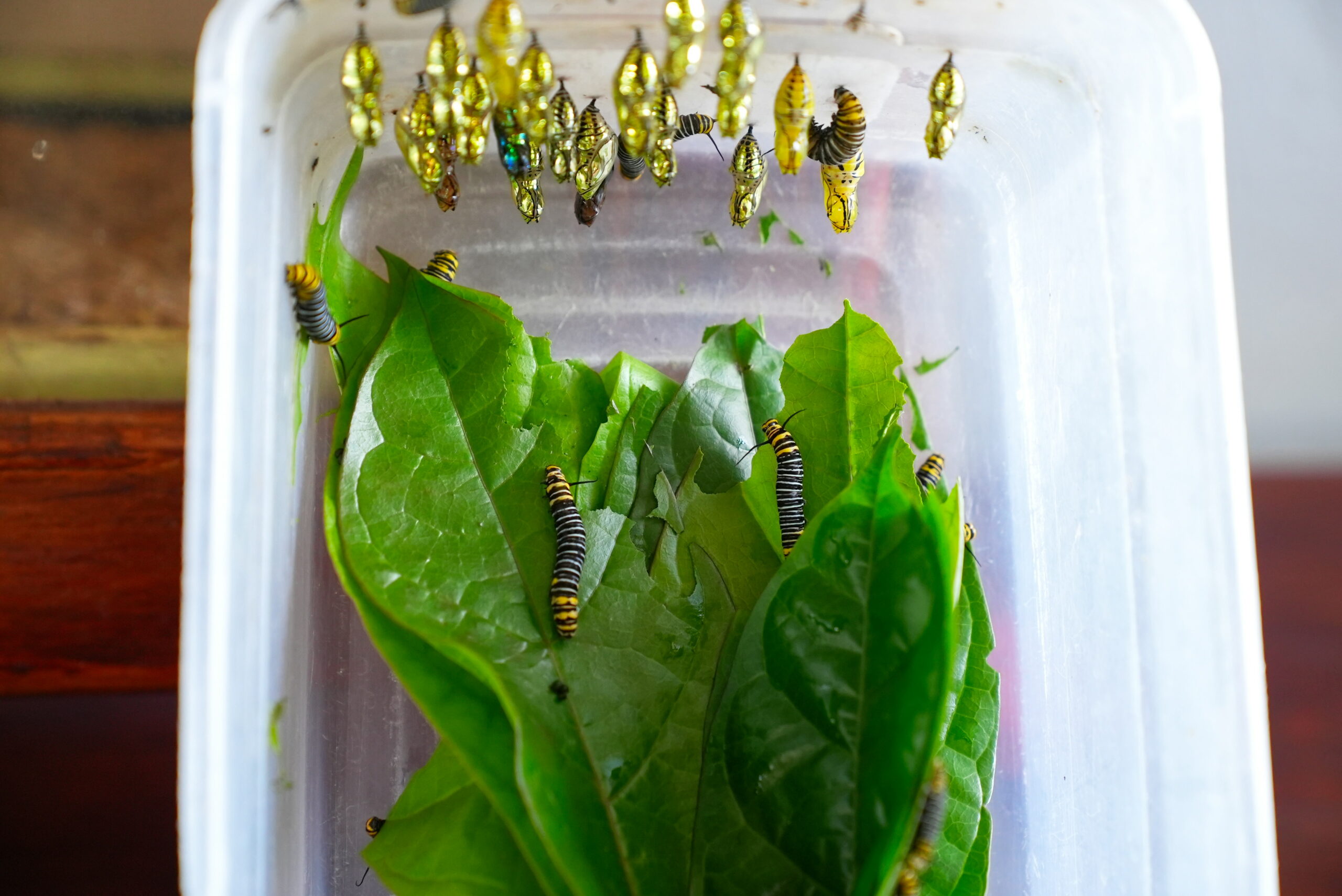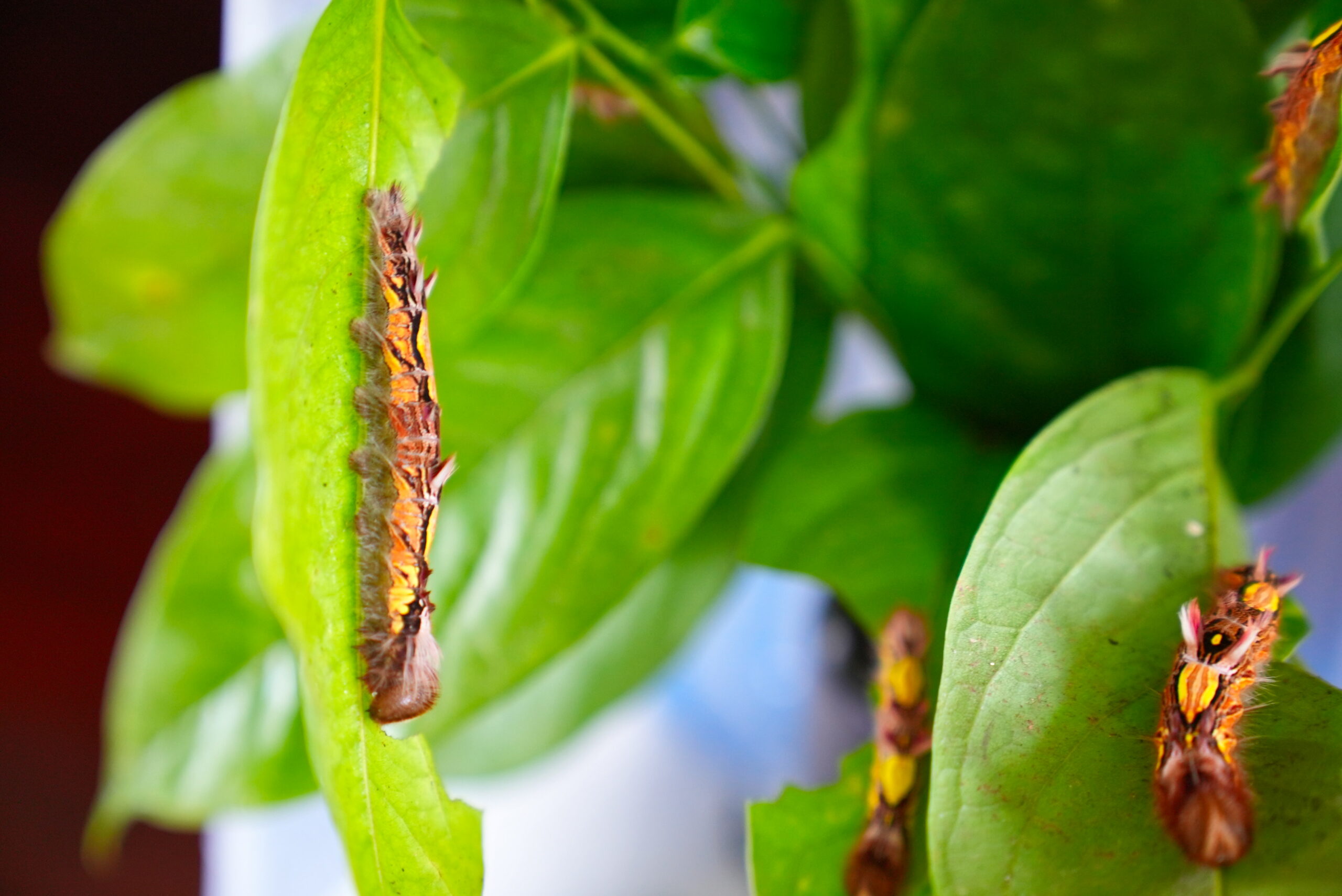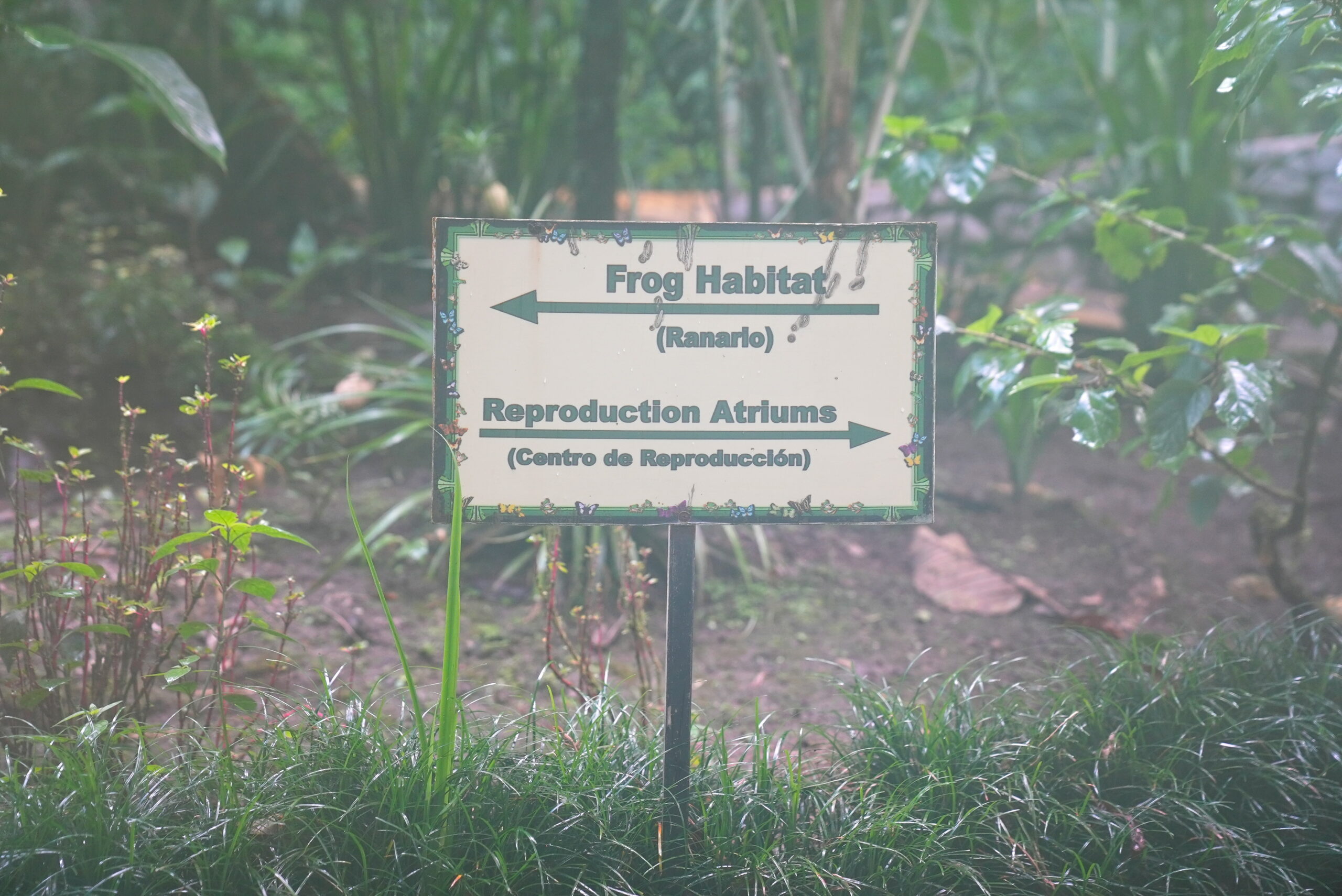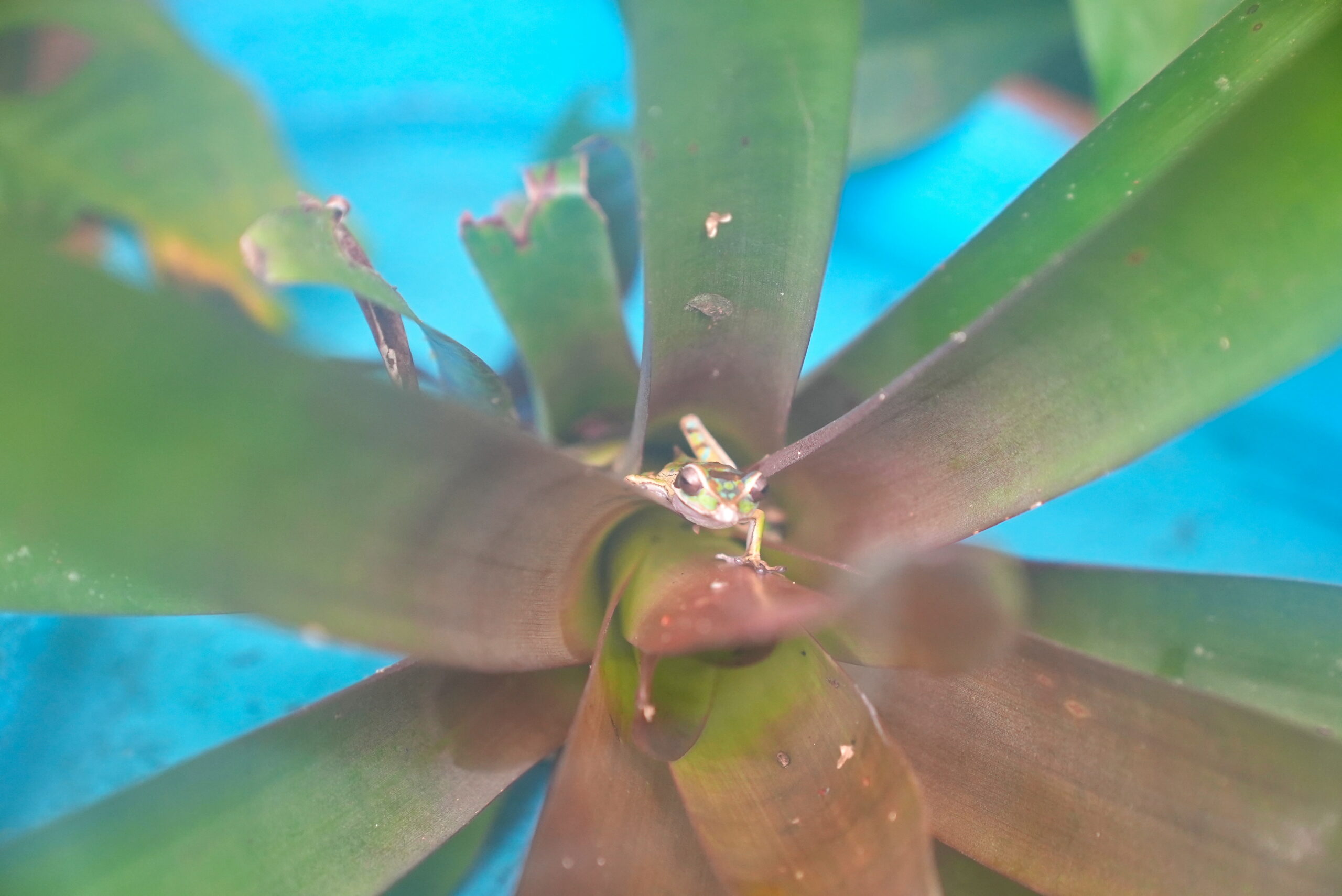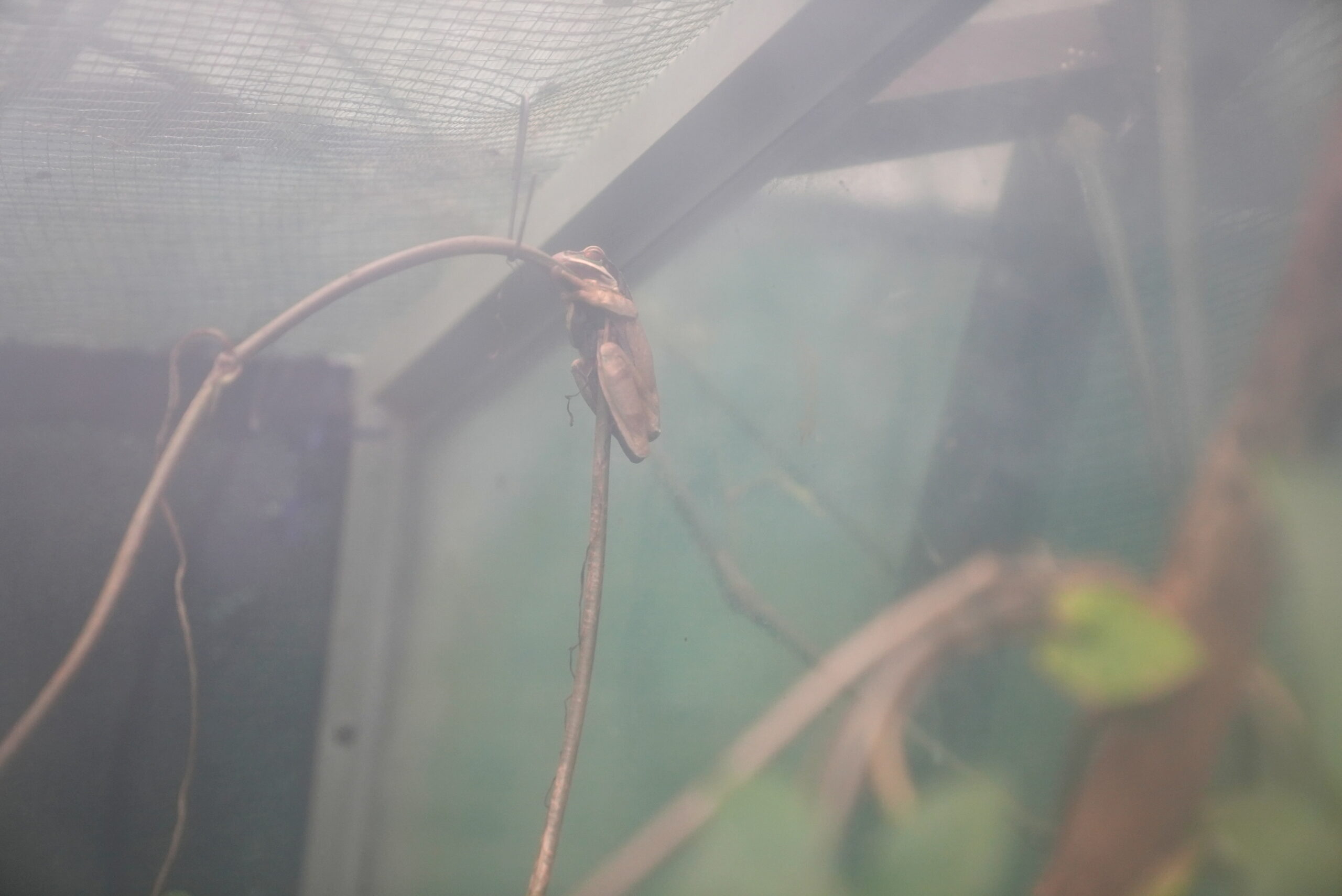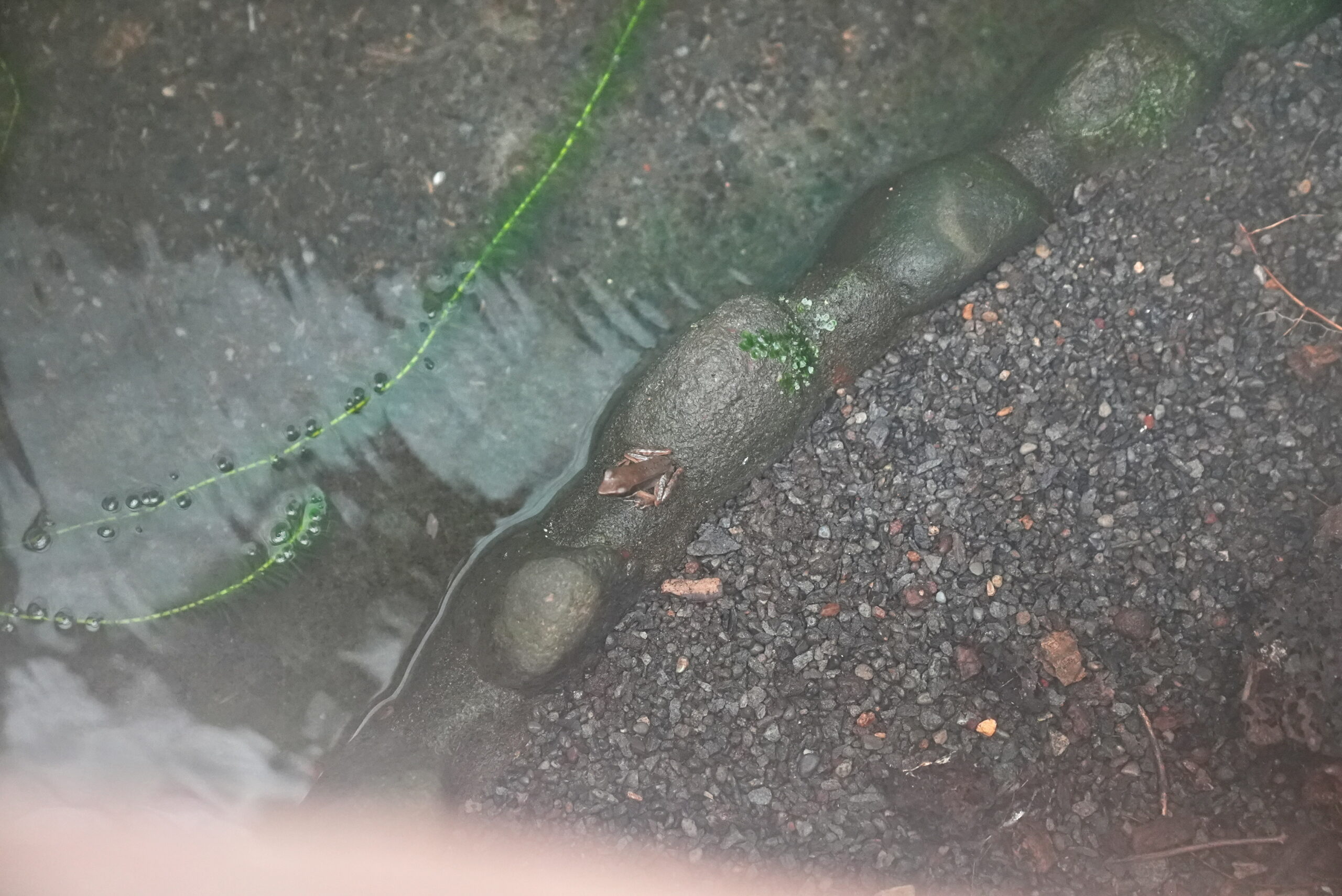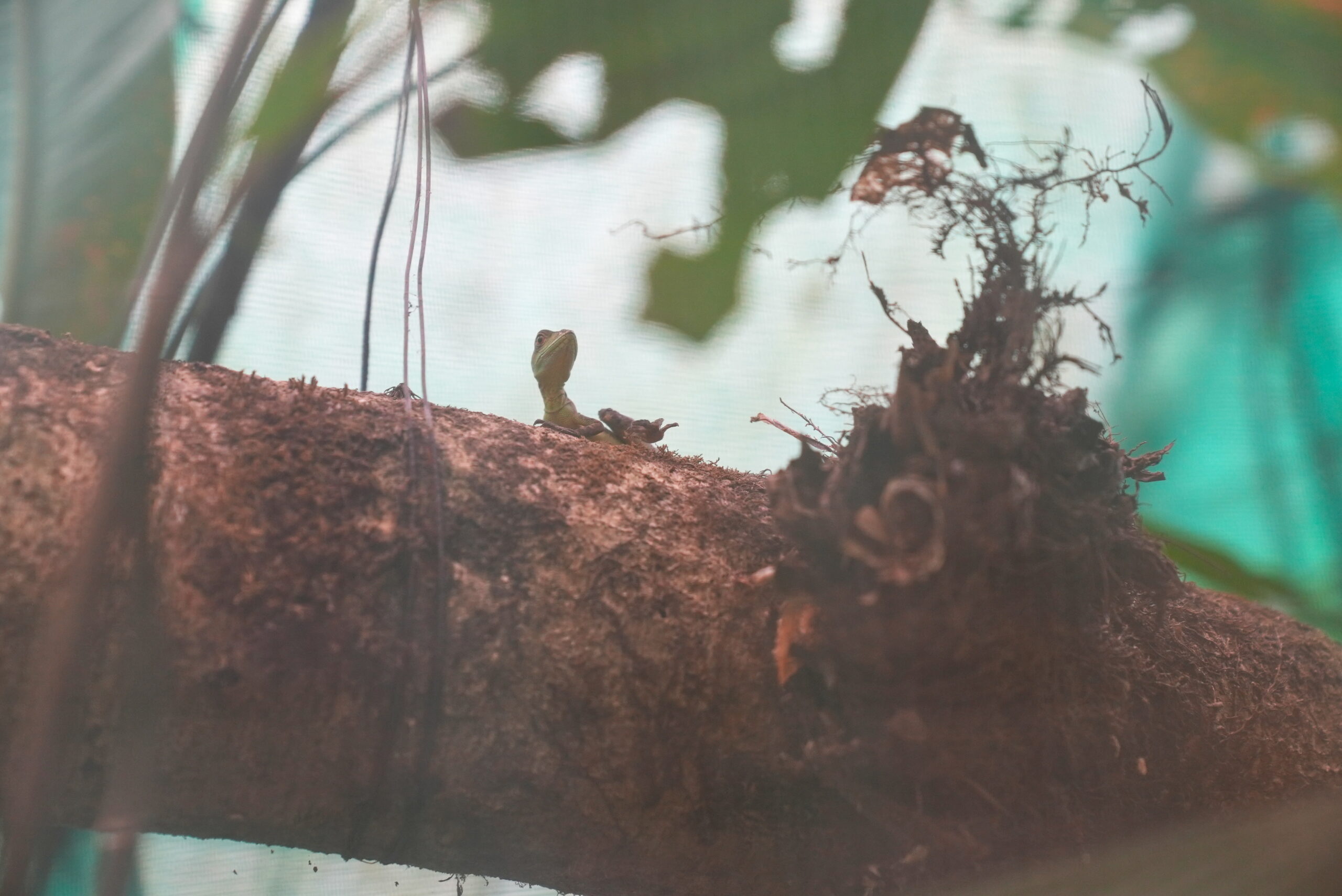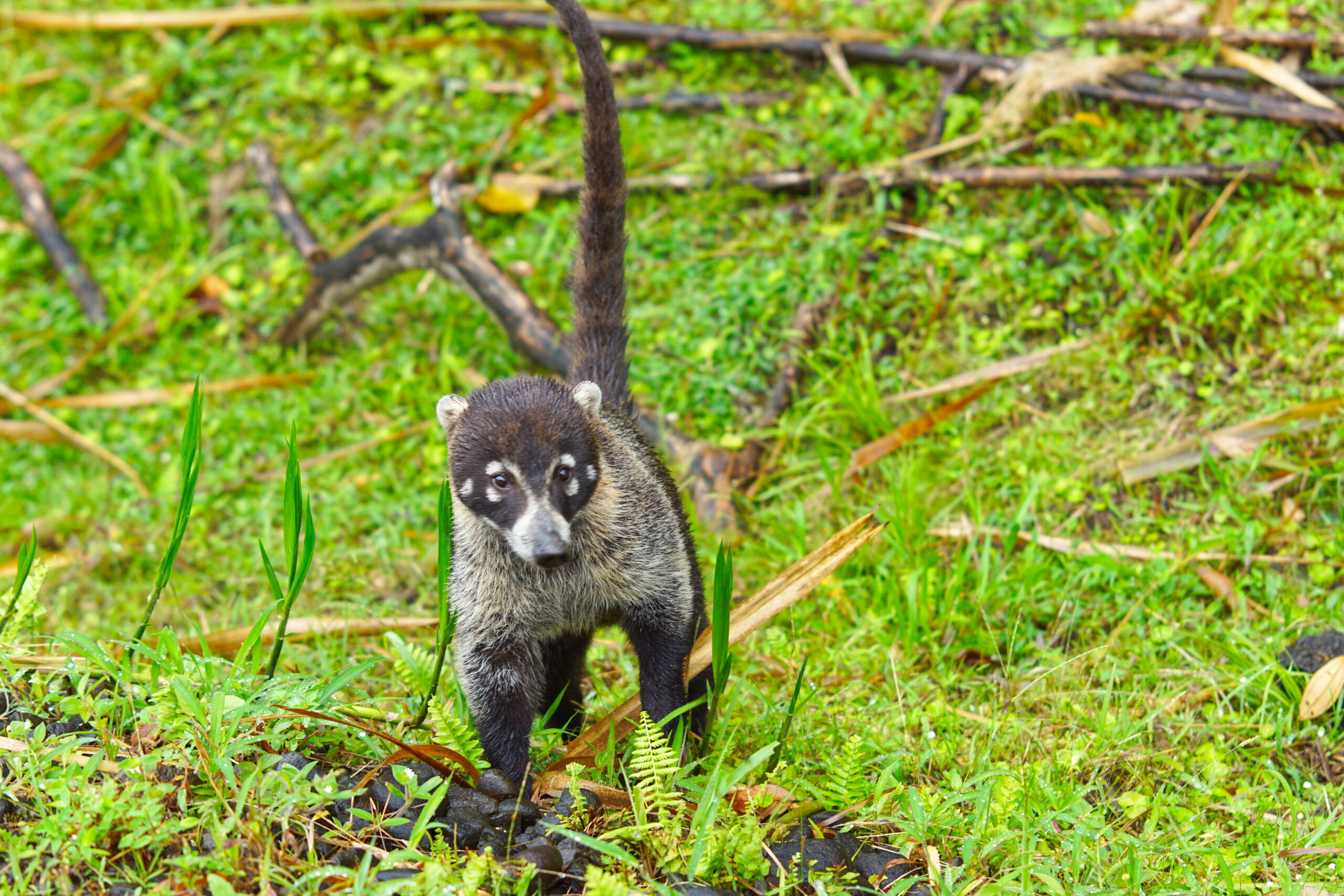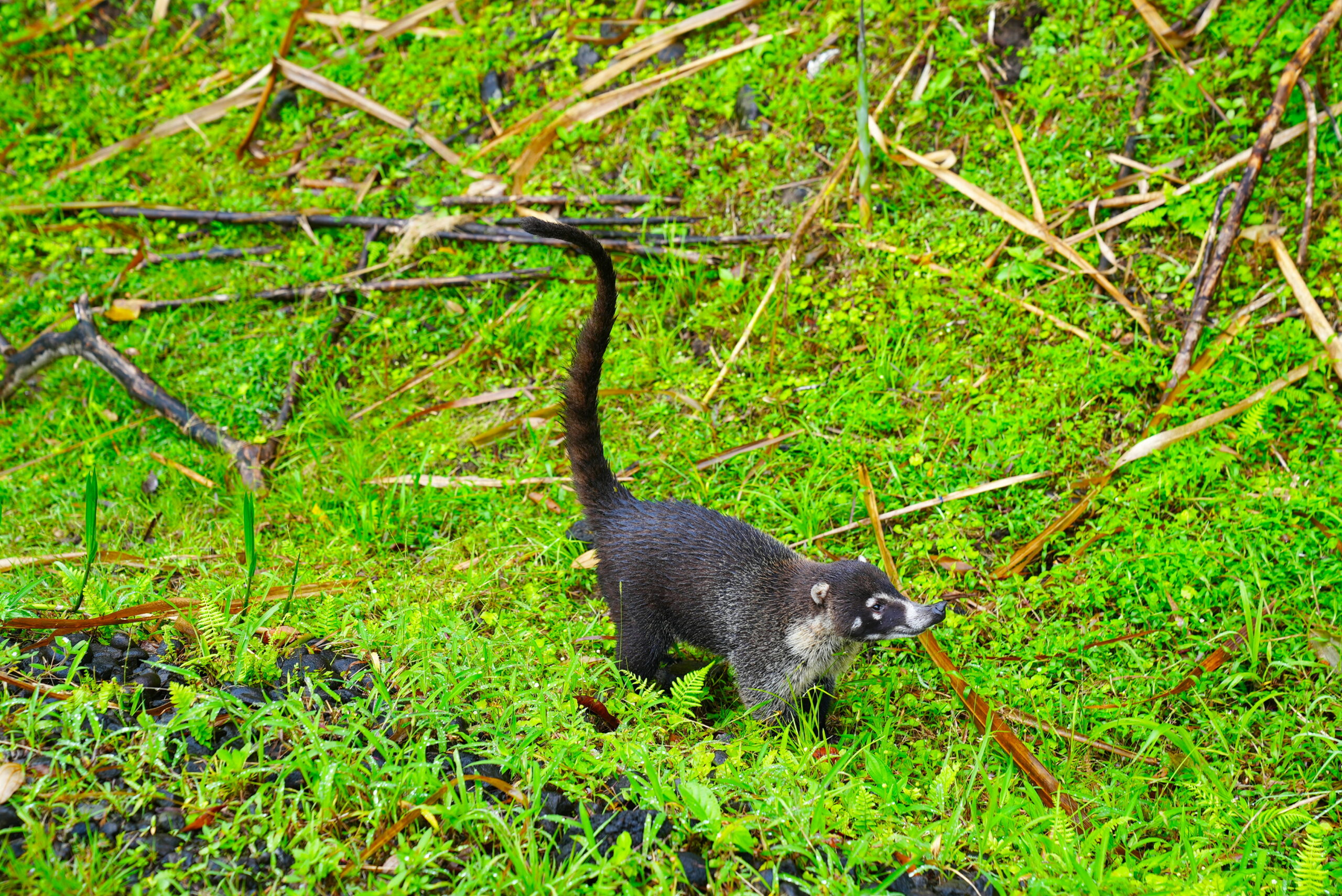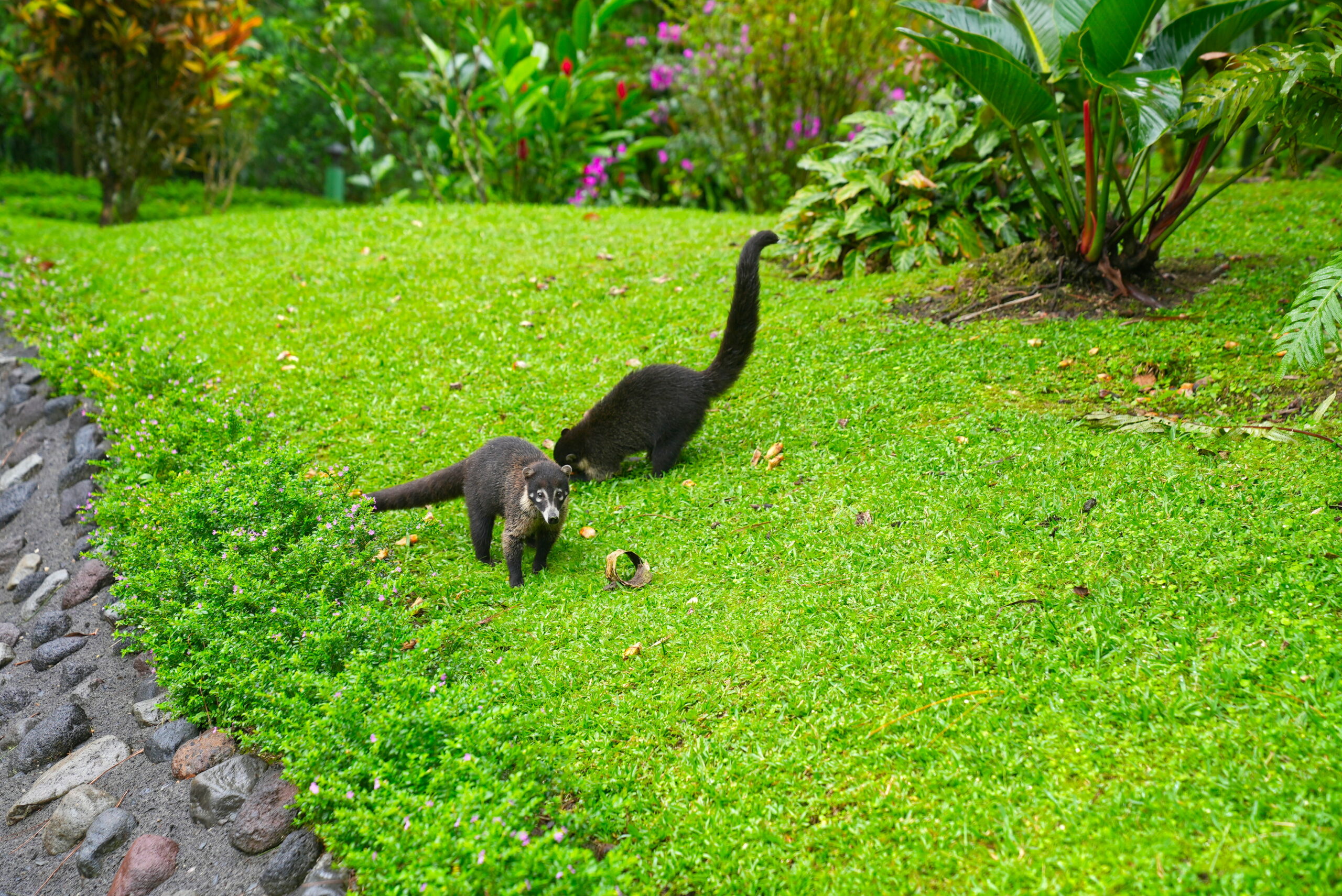La Fortuna, Costa Rica and the area around Arenal Volcano are part of the Arenal Heutar Norte Conservation Area, and include 12 life zones and 16 protected reserves. Which is good, because a main reason we are in Costa Rica is to see the wildlife.
Arenal Observator Lodge and Trails
Arenal Observator Lodge and Trails has more than 352 hectares of land, including 110 hectares of primary forest with rivers and waterfalls, 160 hectares of tropical gardens and reforested lands, and 80 hectares of grazing lands.
In America, waterfalls are wild and unpredictable. In Costa Rica, waterfalls have been domesticated and are all farm-raised.
The forest is warm (we are in Central America, remember) and damp. There isn’t much to see (yet), but there are a lot of jungle sounds. A LOT of jungle sounds.
If you want to listen, we recommend earphones and volume.
We don’t know what makes the hissing noise at the start of the audio. The background hum is a small river.
We think those are frogs.
More frog(?) sounds.
It sounds like we are near a highway. We aren’t.
More not-highway sounds.
Insects and raindrops.
It’s not the same as being here, but you get the idea.
A tree that stands out is the rainbow eucalyptus, the only eucalyptus species that lives in a rainforest and definitely not native to Costa Rica.
These trees are here because some folks, in an effort to reclaim an abandoned cattle ranch, planted them here. As someone who is part of the most invasive species on our planet, I salute these noble, though inadvertent, conquistadores.
When you are in the jungle, you take photographs like this. It can’t be helped.
Danta Bridge
Our hike takes us to the Danta Bridge, which is either 180 feet (54.86 meters) or 60 meters (196.85 feet) in length.
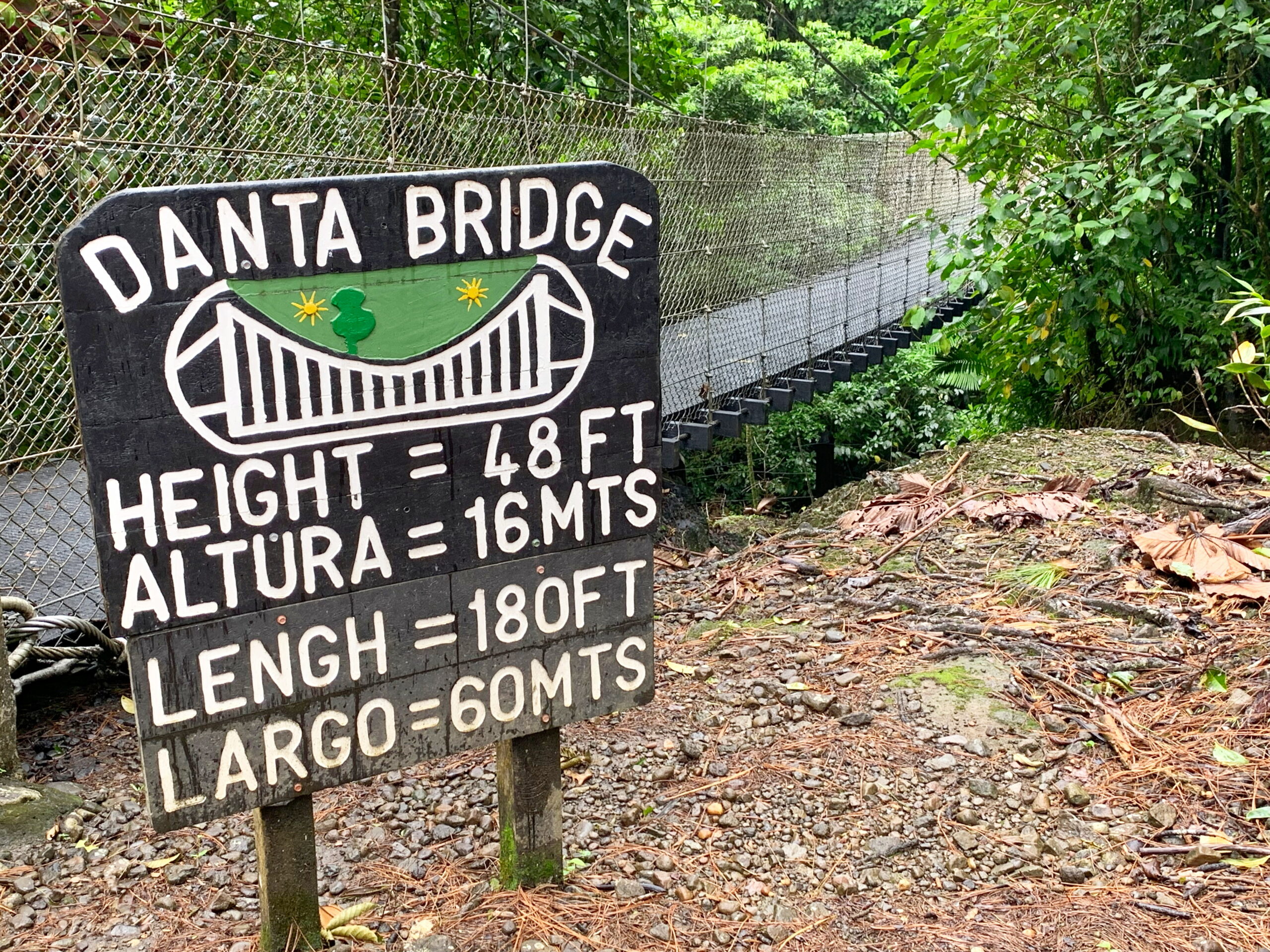
There is something suspicious about their understanding of the US and the Imperial measurement systems.
Well, it is a suspended bridge, so maybe it shrinks and grows depending on the number of people standing on it.
The air here is very humid, and it’s raining off and on. I frequently must remove the UV lens filter from my camera to let the condensation evaporate before I can take a photograph.
Yes, I could be thinner, but when you pose like this next to a big-tittied girl, you will look like you have a pot belly.
This photograph is just so you can see my hair. You are welcome.
At first, we think this is a public restroom, so the message “The hotel is not responsible for accidents” is funny. But, the joke is on us, because it’s just some kind of building with extra arrows pointing to the left.
All the wetness here is blowback (if that’s the right word) from this waterfall.
As we hike through various forests, we encounter birds. Lots and lots of birds.
Someone (an organization? a person? the government?) places benches in the forest a short distance from medieval-weapon-looking fruit holders, conveniently holding fruit.
Take a moment to look at these fellows. They are pretty cool.
We mustn’t forget our friends, the vultures. This is either a turkey vulture or a black vulture. It’s too far away and too backlit for us to know.
Leafcutter Ants
And if we turn our eyes downwards, we see ants.
Leafcutter ants, a non-generic name, are any of 47 species of leaf-chewing ants belonging to the two genera Atta and Acromyrmex. These species of tropical, fungus-growing ants are all endemic to South and Central America, Mexico, and parts of the southern United States. Leafcutter ants can carry twenty times their body weight and cut and process fresh vegetation (leaves, flowers, and grasses) to serve as the nutritional substrate for their fungal cultivates.
I attempt to get an in-focus close-up of the ants, but this is as good as it gets.
I wonder if a strong wind would lift them like a wind-surfer…
They share a very strong work ethic.
This is but one group of leaf cutters that we see. Fortunately, it’s pretty easy to see them and avoid stepping on them.
Flowers
The forest is alive with plants, and we can’t possibly show them all here, but we like these two.
There are 64 species of the genus Calathea. I’m not even going to pretend to guess which one this is.
There are 106 species of Costus in the world. I guess that native Costa Ricans know which one this is. I certainly don’t.
Monkeys
We see a group of people looking skyward and taking photographs with cellular phones (yes, people travel all the way to Costa Rica with no camera better than the “el shitto” camera on a phone), so we join them.
Yes, there is a monkey up there, and this is the image you capture with a phone.
However, if you have a full-frame camera, you can actually capture an image of what is up there.
It’s difficult to see what kind of monkey this is until it stretches from one branch to another, using its tail to help it hang on.
The mantled howler (Alouatta palliata) monkey is one of the largest Central American monkeys, and males can weigh up to 9.8 kg. It is one of the monkey species most often seen and heard in the wild in Central America. It takes its “mantled” name from the long guard hairs on its sides.
Eventually, we see many monkeys here, but this is the first one, so it’s pretty exciting for us.
Butterflies
The Oxford English Dictionary derives the word straightforwardly from Old English butorflēoge, butter-fly; similar names in Old Dutch and Old High German show that the name is ancient, but modern Dutch and German use different words (vlinder and Schmetterling) and the common name often varies substantially between otherwise closely related languages. A possible source of the name is the bright yellow male of the brimstone (Gonepteryx rhamni); another is that butterflies were on the wing in meadows during the spring and summer butter season while the grass was growing.
Even though the forest is alive with insects, butterflies are pretty, and it’s important to conserve pretty things. Thus, we have the Butterfly Conservatory. “The Butterfly Conservatory is a Nature Regeneration Project dedicated to the preservation, growth, and study of the rainforest, with a focus on butterflies and other tropical rainforest species of the Arenal region of Costa Rica. Our Metamorphosis Tour offers a practical educational adventure about nature, with diversified exhibits of how butterflies, frogs, insects, and plants reproduce in this natural environment surrounding the Arenal Volcano.”
“The project contains the largest exhibition of butterflies in Costa Rica and is a learning center for understanding the butterfly life cycle and incredible metamorphosis experience. Nature enthusiasts of all ages enjoy our interactive educational demonstration of how butterflies and nature are being regenerated in the Arenal area.
The Butterfly Conservatory is maintained by tourist entrances and donations of energy from visitors. It serves as a scientific and educational center for students and individual volunteers that contribute to the regeneration of the rainforest around the Arenal Lake.”
The friendly folks at the Conservatory remind us that we may be killed at any time by their active volcano. Good to know, I guess. But, I digress. Let’s find out about butterflies.
There are two takeaways here. (1) “…their main goal is to mate…” So, in that way, they are little different than humans. (2) “Orgasms can last from 30 minutes to hours while the male transfers sperm packets…” Yeah, that’s a few minutes longer than I can do it. Yeah…
There are many, many interesting-looking butterflies here, including this owl butterfly that can grow up to 200mm. Regarding that spot: “The underwing pattern is highly cryptic. It is conceivable that the eye pattern is a generalized form of mimicry. It is known that many small animals hesitate to go near patterns resembling eyes with a light-colored iris and a large pupil, which matches the appearance of the eyes of many predators that hunt by sight.
According to the Batesian mimicry theory the pattern on the wings of Caligo resemble the head of a predator like a lizard or an amphibian. It should deter predators while resting, feeding, mating, or emerging from the pupa.
The role of eyespots as antipredator mechanisms has been discussed since the 19th century. Several hypotheses are suggested to explain their occurrence. In some butterflies, particularly Satyrinae (such as the gatekeeper butterfly and the grayling), it has been shown that ocelli (eyespots) serve as a decoy, diverting bird attack away from the vulnerable body, and towards the outer part of the hindwings or the forewing tip.”
Greta oto, the Glasswing Butterfly, uses its transparency to hide from predators by camouflaging into the background during flight. Transparency is a rare trait among Lepidoptera, since they more commonly use mimicry to ward off predators.
This Archaeoprepona demophon posed perfectly to photograph its planer position.
Even more butterflies for your enjoyment.
And if you want to really educate yourself, the Conservatory is here to help.
We ask the guide to take our picture with the butterflies. You can’t see them, but they are here.
We all know why I take this photograph. You’re welcome.
The Conservatory has a display of young ‘uns. They are not quite as amusing as the adults; more like shiny trinkets than cool flying things.
I don’t know, but I’m guessing that these guys are bright and colorful for a reason.
Frogs
Of course, being a Butterfly Conservatory does not preclude conserving frogs. And Costa Rica has MANY frogs to conserve. To the Ranario!
The frogs here are tiny. There is no way you’d order frog legs in a restaurant.
These little fellows are in their natural habitat, and I must use manual focus to get these photographs.
Half of these frogs are brightly colored and half are dully-colored, but all blend in with their environment.
Well, maybe not this guy. But there are no predators in the Conservatory, so not to worry.
Costa Rica has thirteen species of gecko, and these are conserved, also.
Coati Mundi
One of the animals we hope to see in Costa Rica are coati mundi, and we find them here.
The coati are foraging on the side of the road. We stay in our car (for our safety and to not startle them), and they ignore us as we take photographs.
These coati are foraging by pushing their snout through the underbrush, looking for whatever lurks in there. According to the internet, “the snout, with an acute sense of smell, assists the paws in a hog-like manner to unearth invertebrates.”
These two are different, with bushier tails. The internet says the tail is not prehensile and is used for balance and signaling.
And that brings us to the end of our adventures in La Fortuna. Stay tuned as we head south to see what other wacky adventures await!

